Marine inhabitants and interesting facts about them. Undersea world
Marine animals are often especially popular - pictures for children depicting the inhabitants of the depths of the sea,
attract children because they allow them to immerse themselves in the unknown expanses of the World Ocean, reminiscent of magic kingdoms and fairy-tale kingdoms far away.You can conduct a thematic lesson dedicated to the inhabitants of the deep sea, and tell a few interesting facts about each of them:
Fish appeared before dinosaurs. They move even when they sleep.
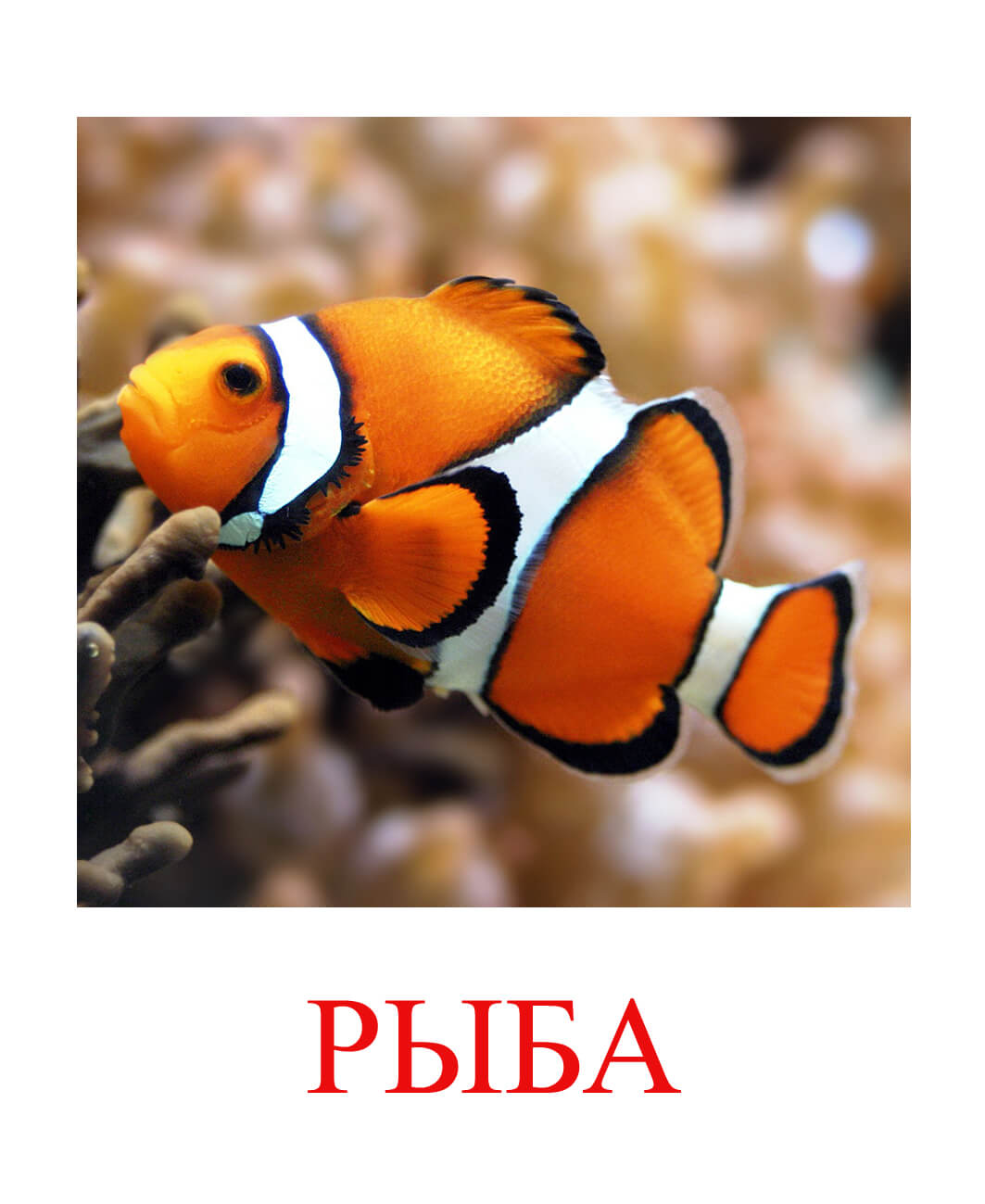
An octopus has three hearts.

Fur seals practically do not get out of the water in winter and spring, but in summer and autumn they lie almost motionless on the shore, accumulating fat.
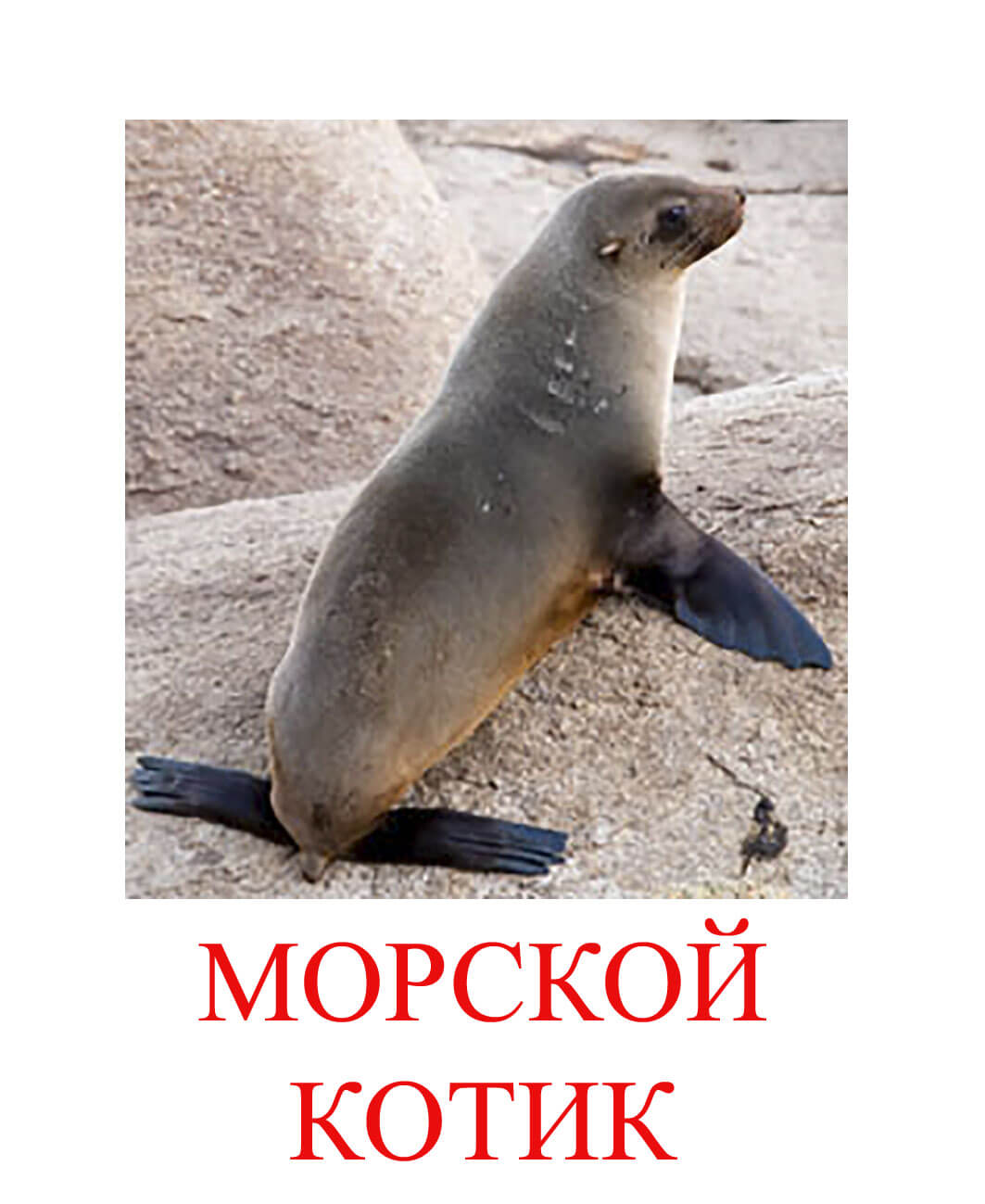
Seahorses can change their color like chameleons.
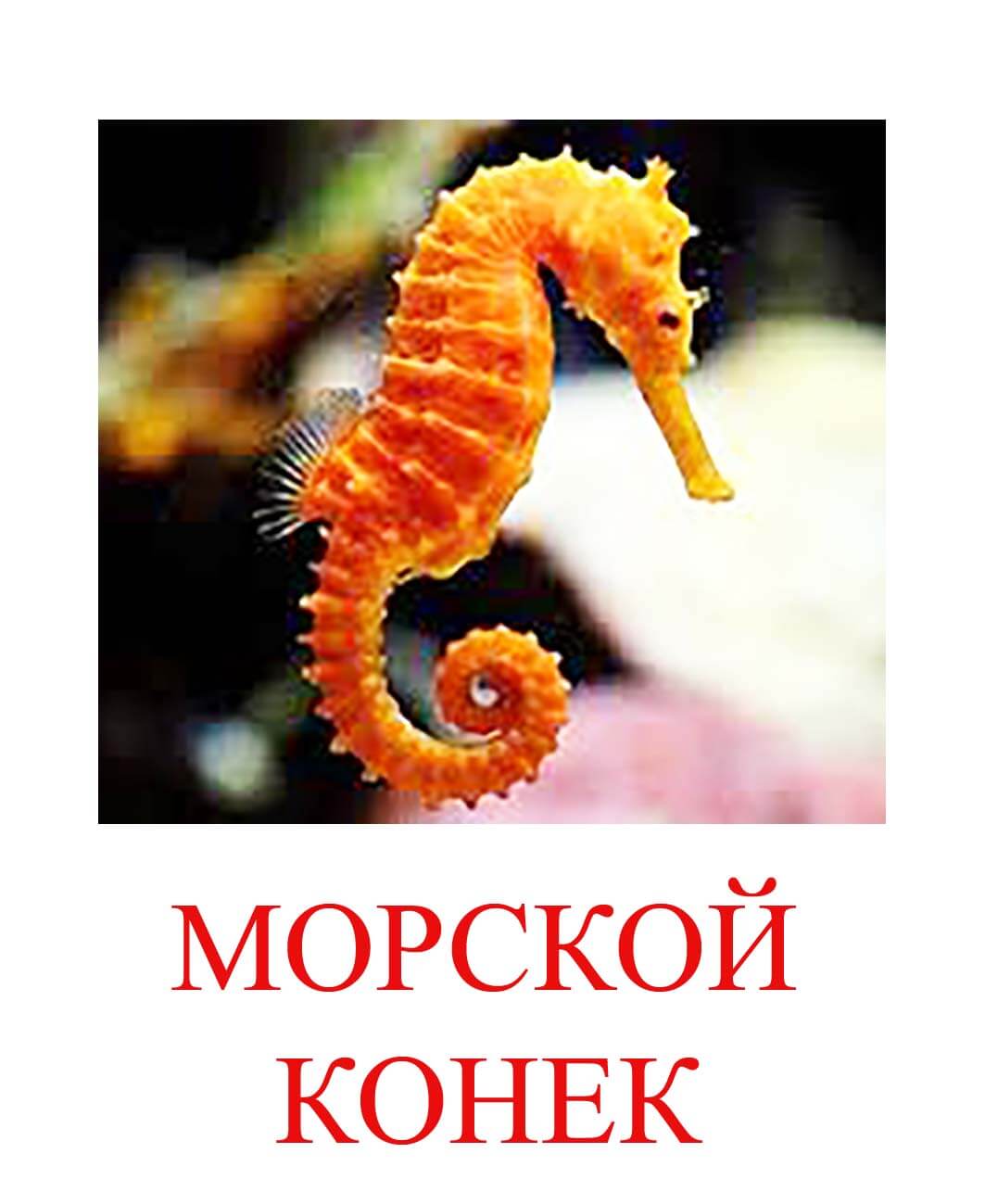
The sea urchin has five jaws.
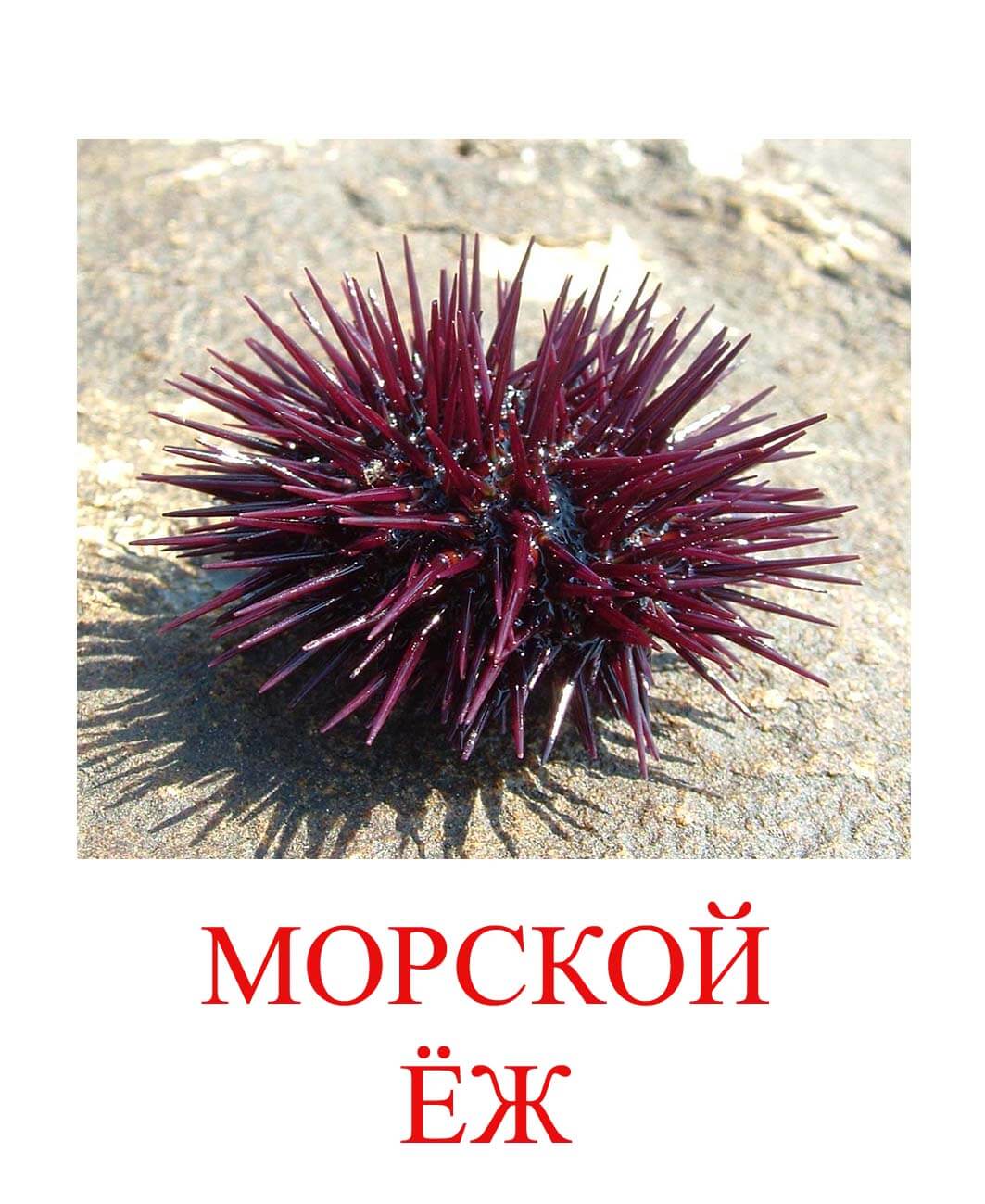
Sea turtles breathe air, but during sleep they may not rise to the surface of the water for about seven hours.

Starfish can't swim. They move only using suction cups.

A walrus climbs out of the water, clinging to ice floes with its tusks. Therefore, in Latin, its name sounds like “a sea horse walking with the help of its teeth.”
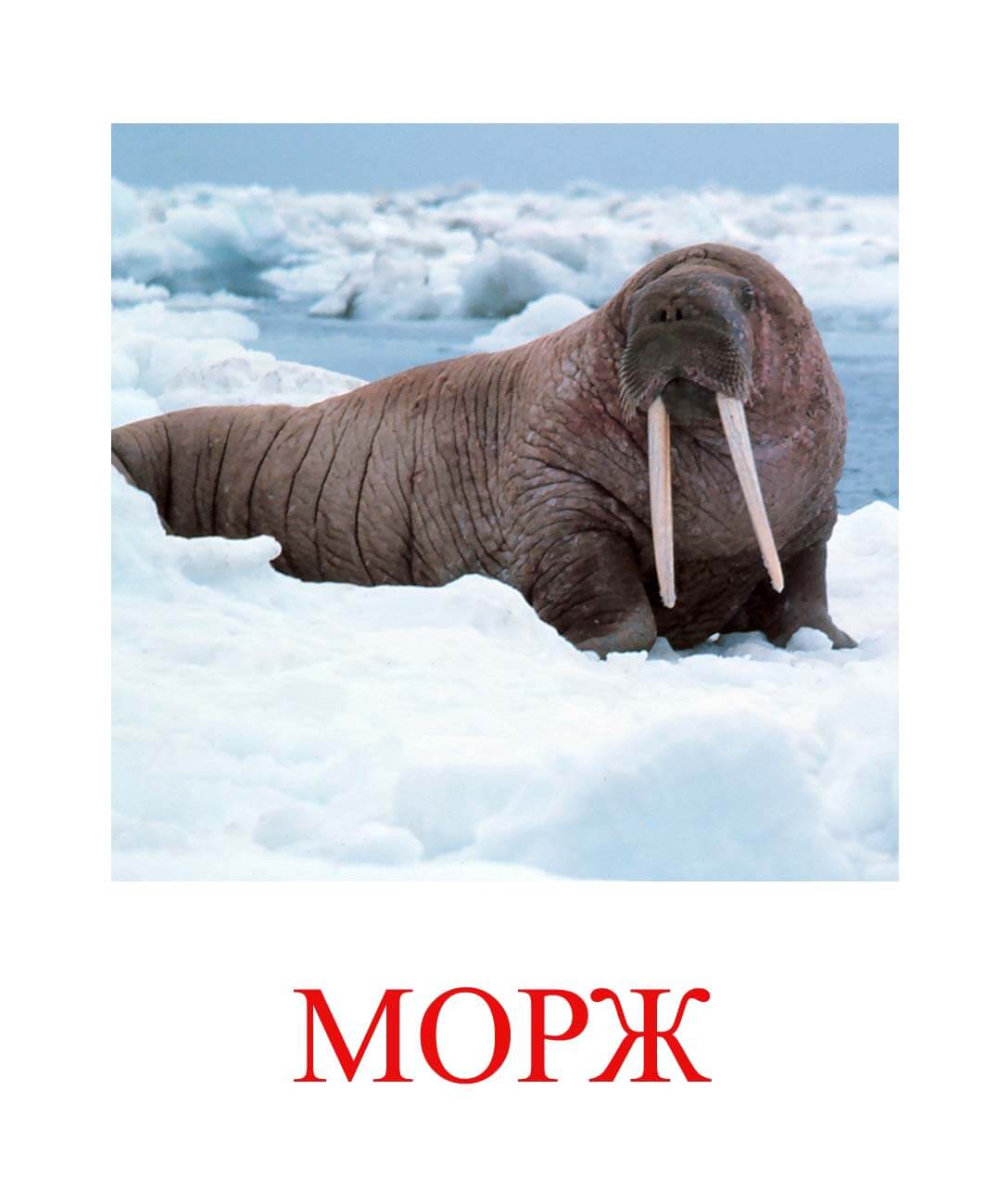
The head of a jellyfish can reach a size of two meters or more, and the tentacles can reach 20 meters or more.

Shrimp eggs can be stored for years in dried form, but once they get into the water, the babies hatch within a few hours.

The crab always breathes air dissolved in water. Even on land - for this purpose it stores water reserves in its gills.
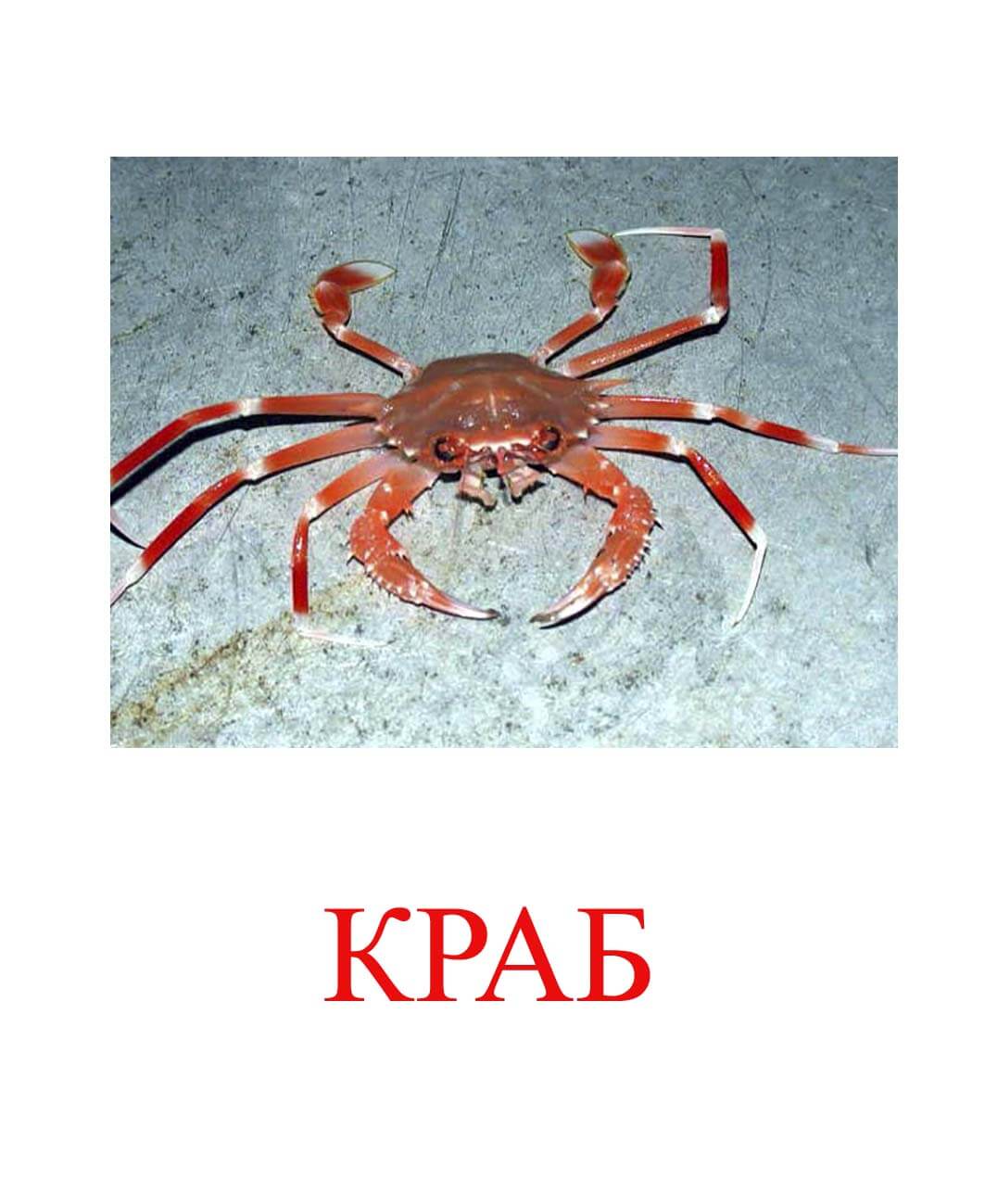
The killer whale is the largest predator that feeds its children with milk.
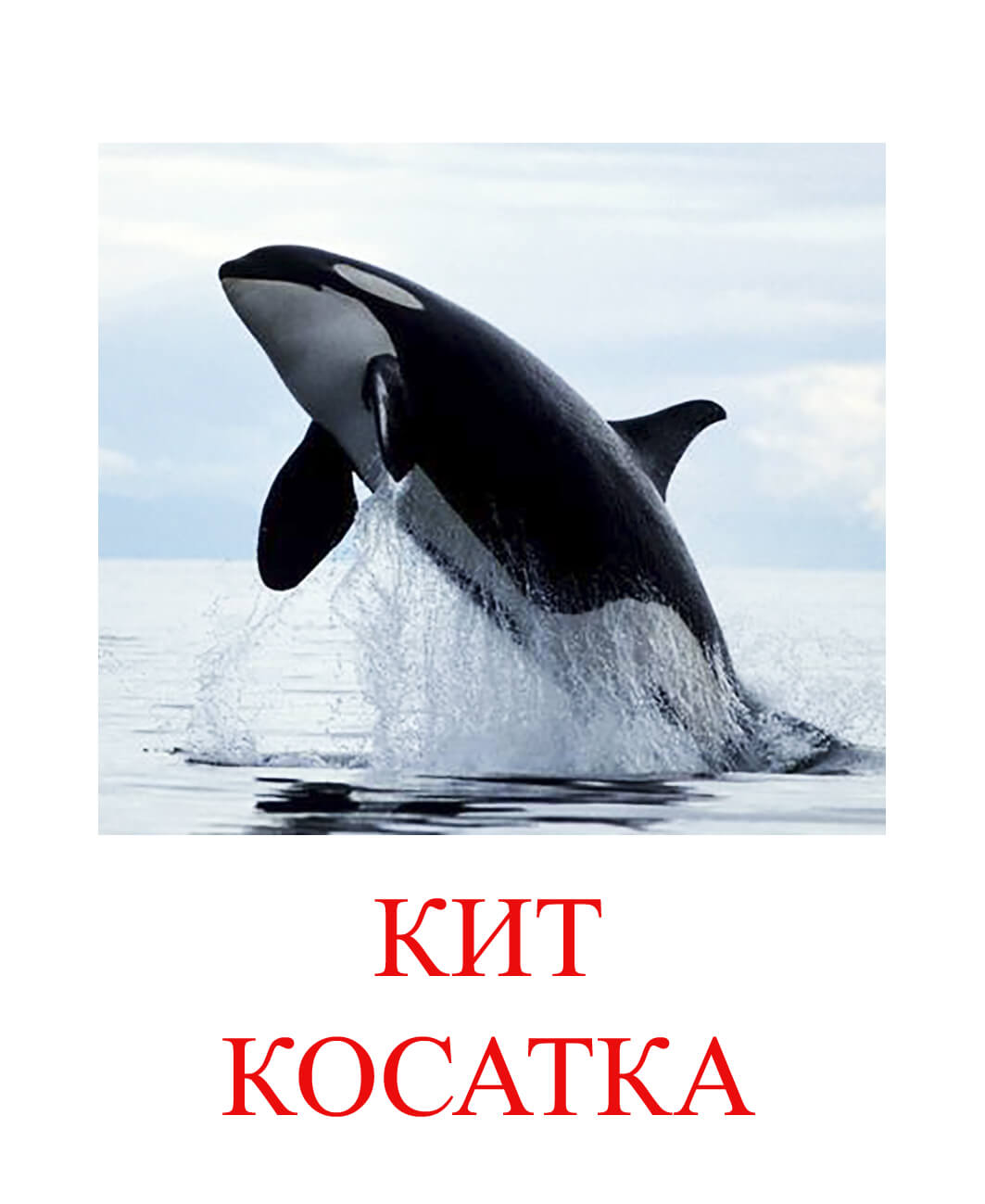
The sperm whale does not have organs that help recognize odors.

Dolphins had paws a million years ago.

Squids can fly like flying fish.

The stingray does not see what it eats: its eyes are on the upper half of its body, and its mouth is on the lower half.
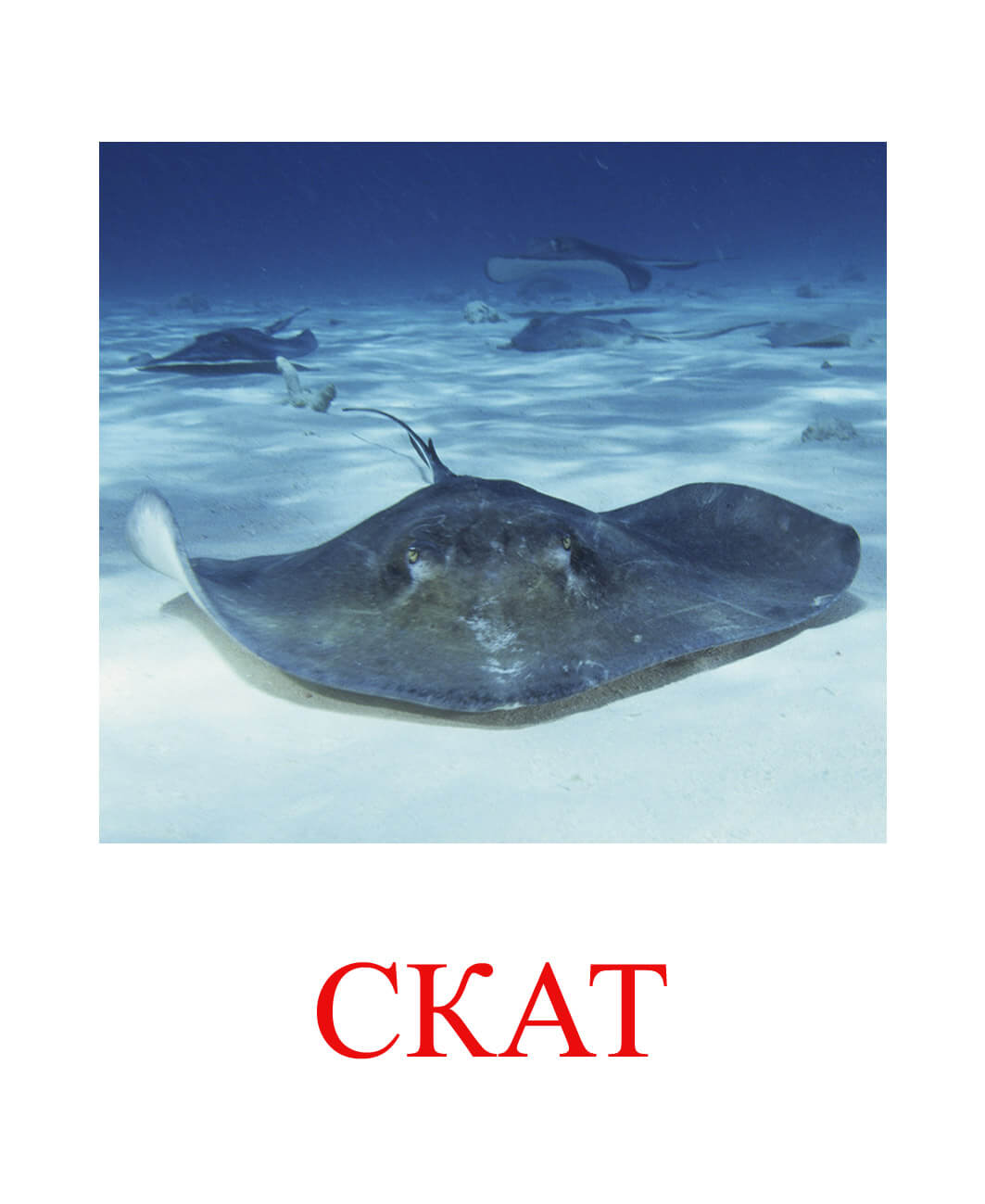
Sharks grow new teeth throughout their lives.

Children are interested in working with, which can be used as pictures printed on thick paper and cut, depicting sea animals.


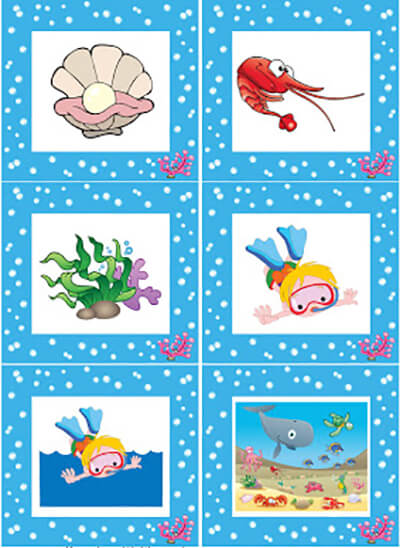
For children, the process of memorizing names is simplified, since in working with them the baby uses his fingers, on which there are a large number of nerve endings. By stimulating the work of the brain, the child activates his memory and quickly learns new material. In addition, cards are convenient to use for simple games that will make the learning process more interesting.
Card games can be played using wall posters. Let the child draw out one picture, and then find the character depicted on the poster and name him. If such an activity is carried out in a group, you can take turns pulling and looking for the animal among the other sea animals.
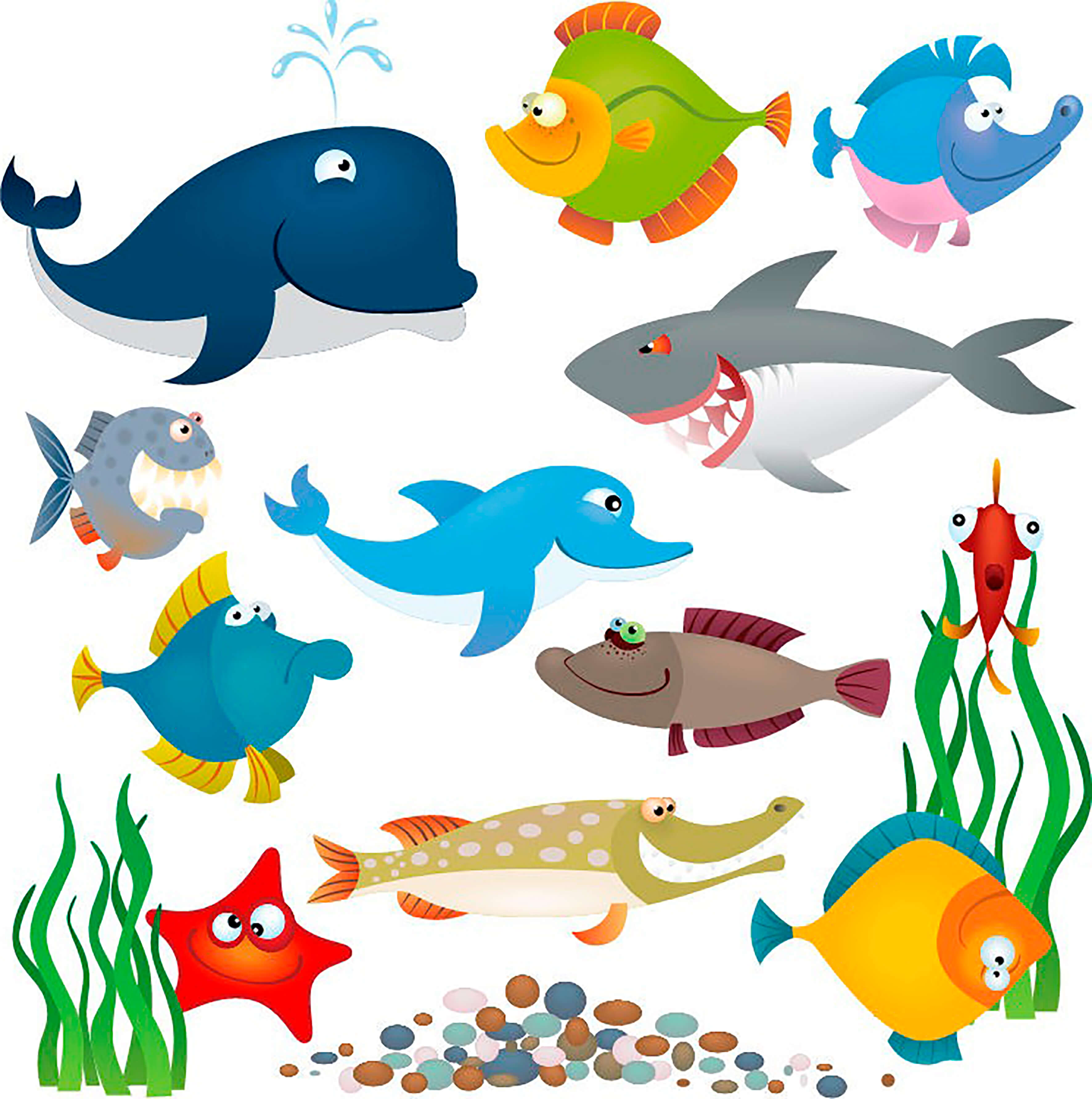
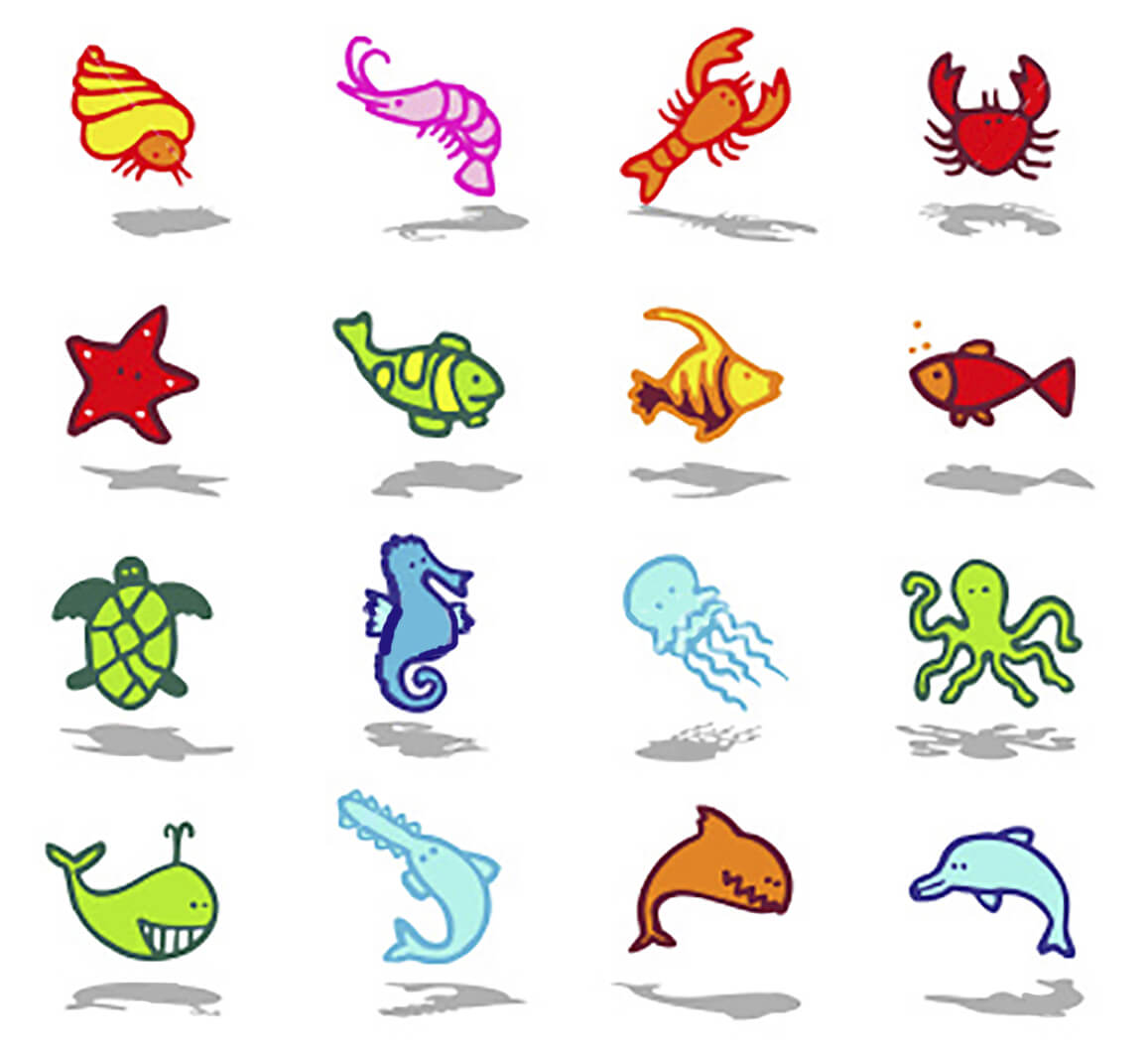
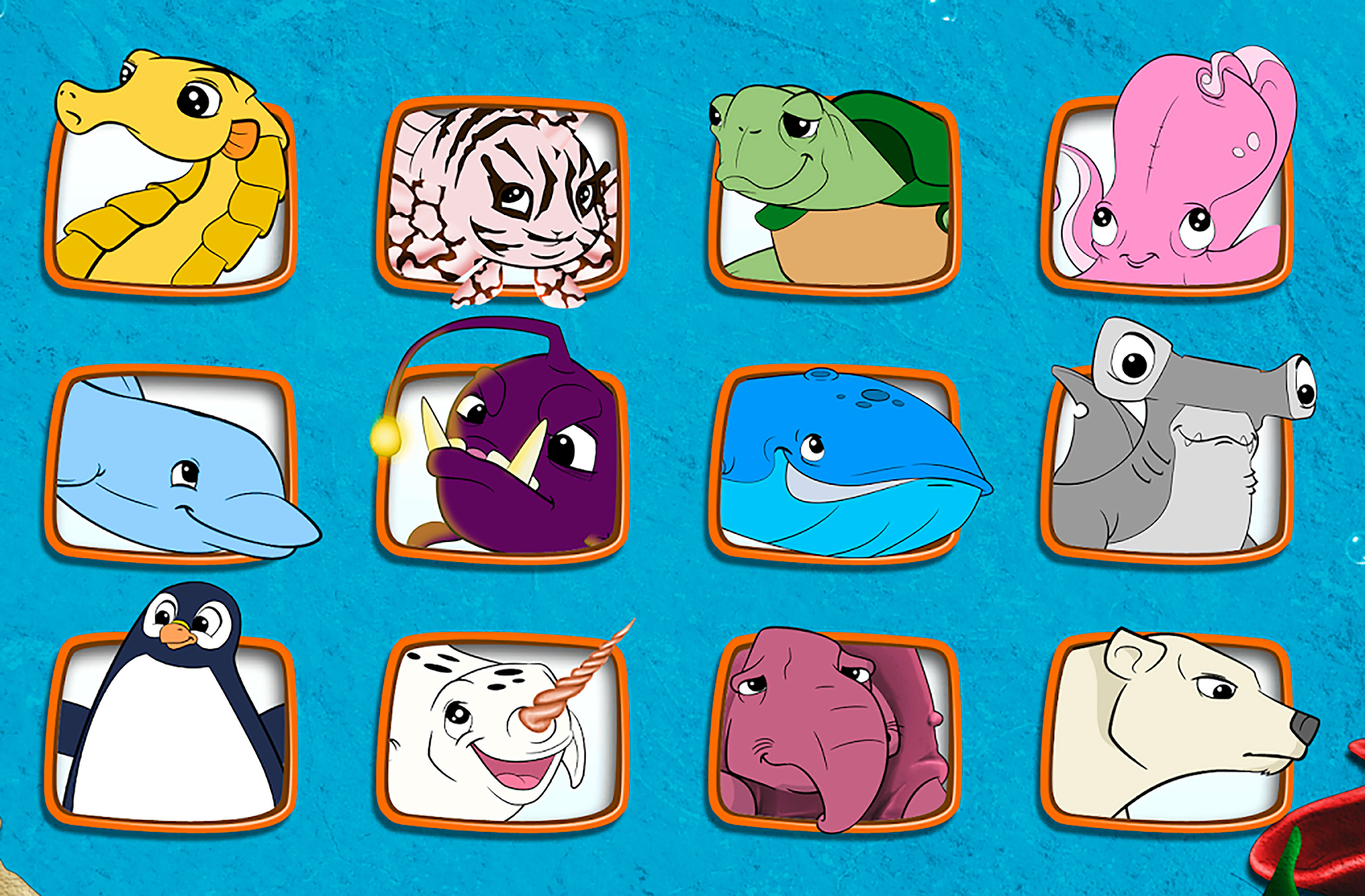
When studying animals, you can use not only ready-made drawings, but also: let the child decide for himself what the sea inhabitants depicted on them will look like. Pictures for children that require coloring help to use motor memory, train the baby's hands, and use his imagination. Therefore, the use of such benefits is of great benefit.


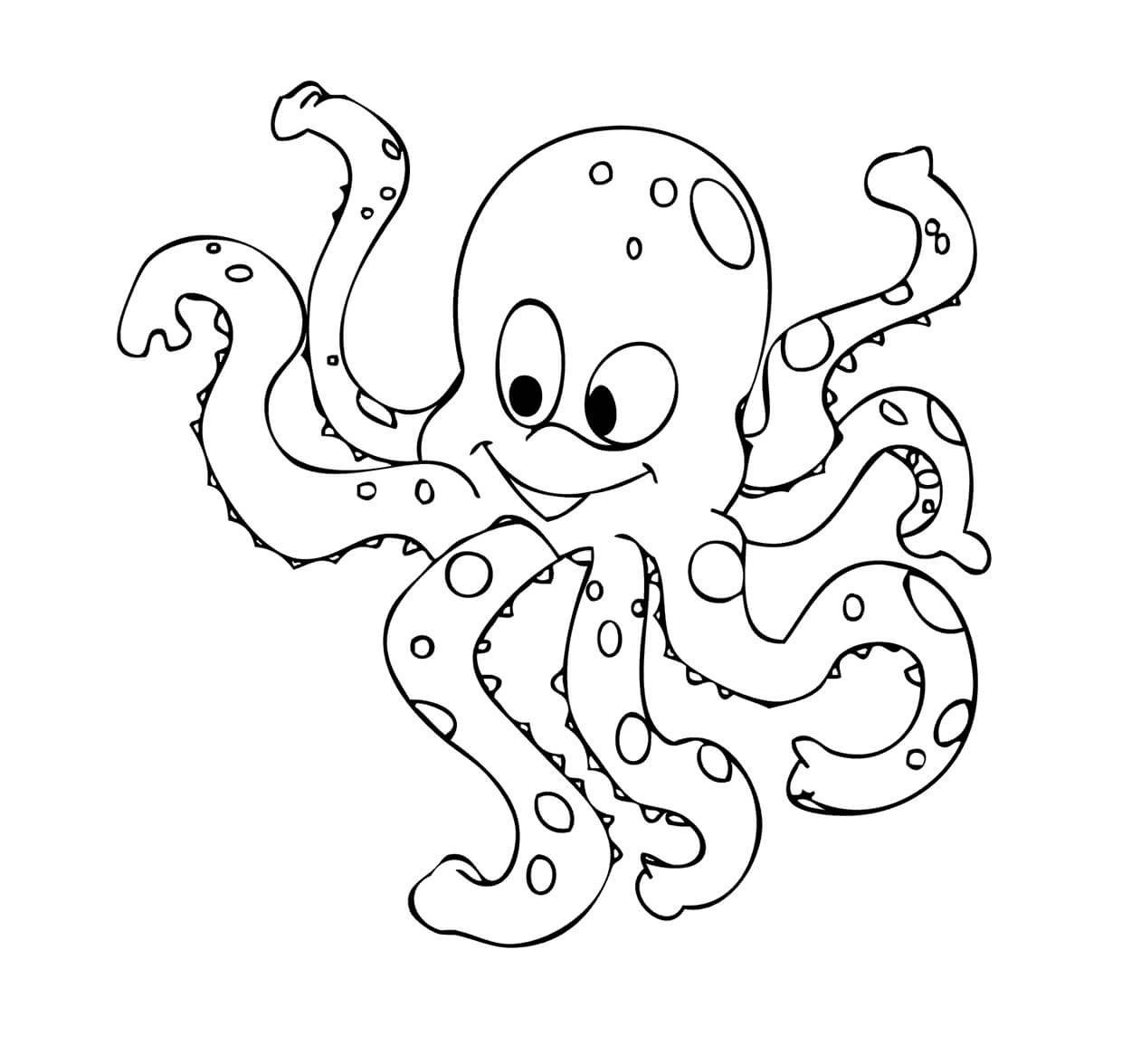
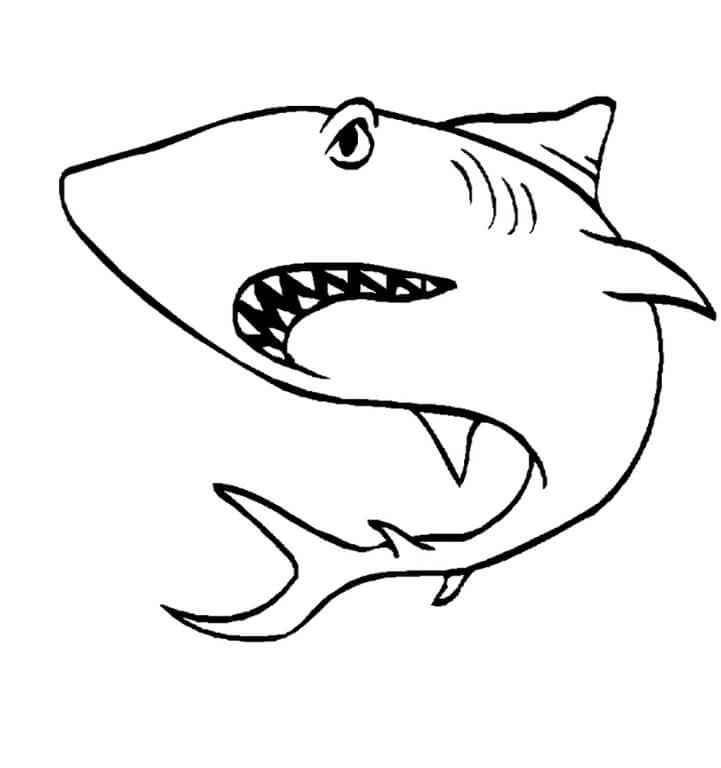
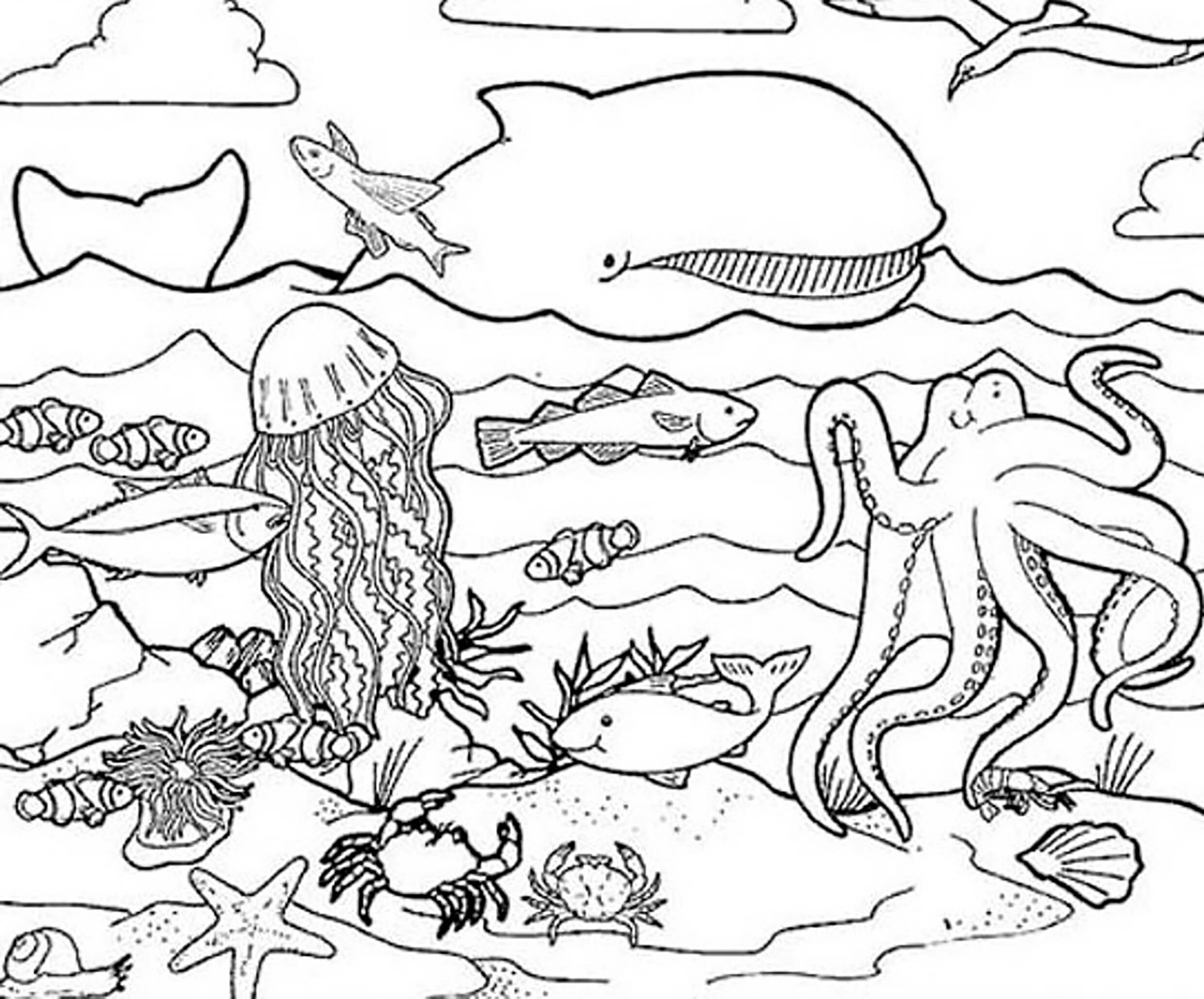
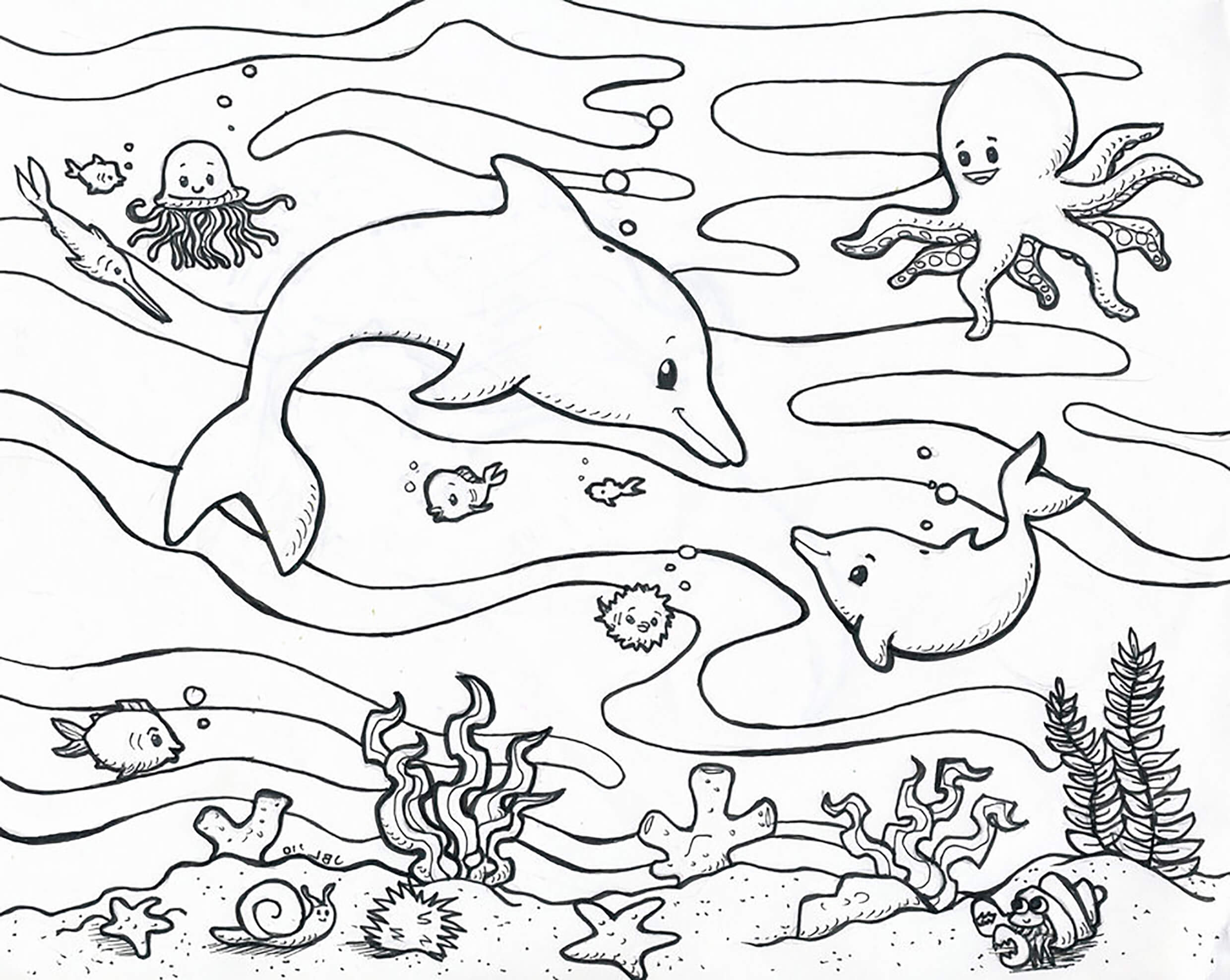

By exploring the underwater world, the child begins to feel like part of a huge global community, and this feeling of unity with the natural world contributes to his development and formation as a mature personality.
Seas and oceans are the cradle of life on Earth. According to some theories, all life on the planet originated in water. The sea resembles a huge metropolis, where everything lives according to its own laws, everyone takes their place and performs a very important function. If this order, which has developed into a harmonious mosaic, is disrupted, then this city will cease to exist. Therefore, it is important to know about the riches of the animal world. You can find out who these marine inhabitants are, photos with the names of the most common species and interesting facts about their life.
All living creatures inhabiting the sea are divided into several categories:
- animals (mammals);
- fish;
- algae and plankton;
- deep-sea fauna;
- snakes and turtles.
There are animals that are difficult to classify into a specific group. For example, sponges or sponges.
Marine mammals
Scientists have discovered more than 125 species of sea-dwelling mammals. They can be divided into three main groups:
- Walruses, fur seals and seals (order pinnipeds).
- Dolphins and whales (order cetaceans).
- Manatees and dugongs (order of herbivores).
- Sea otters (or otters).
The first group is one of the most numerous (more than 600 million individuals). They are all predators and eat fish. Walruses are very large animals. Some individuals reach a weight of 1.5 tons and grow up to 4 m in length. Given their size, the agility and flexibility of walruses is amazing; they move easily on land and in water. Thanks to the special structure of the pharynx, they can spend a long time in the sea and will not drown, even if they fall asleep. The thick brown skin lightens with age, and if you see a pink, even almost white, walrus, you know that he is about 35 years old. For these individuals, this is already old age. Walruses are not confused with seals only due to their distinctive feature - tusks. Measurements of some of the largest tusks showed almost 80 cm in length and a weight of about 5 kg. The walrus's front fins end in fingers - five on each paw.
Seals live in the Arctic and Antarctic, so they can withstand extremely low temperatures (down to - 80˚C). Most of them do not have external ears, but they hear very well. Seal fur is short but thick, which helps the animal move underwater. It seems that seals on land are clumsy and defenseless. They move with the help of their forelimbs and abdomen; their hind legs are poorly developed. However, they move briskly in the water and swim excellently.
Fur seals are very voracious. They eat 4 - 5 kg of fish per day. The leopard seal, a subspecies of seals, can catch and eat other small seals or penguins. The appearance is typical of most pinnipeds. Seals are much smaller than their fellow cats, so they crawl on land using all four limbs. The eyes of these sea inhabitants are beautiful, but it is known that they see poorly - myopia.
Dolphins and whales are related to each other. Dolphins are one of the most unusual creatures on the planet. Their distinctive features:
- The absence of ears, nose, small eyes and at the same time a unique echolocation that allows you to accurately determine the location of objects in the water.
- A bare, streamlined body, without signs of fur or scales, the surface of which is constantly renewed.
- Voice and rudiments of speech, allowing dolphins to communicate with each other in a school.
Whales are giants among mammals. They feed on plankton or small fish and breathe through a special hole called a “blowhole.” During exhalation, a fountain of moist air from the lungs passes through it. Whales move in the water with the help of fins, the size of which differs among different species. The blue whale is the largest animal that ever lived on Earth.
The most popular types of sea fish
The second largest group of marine inhabitants includes the following species:
- Cod (blue whiting, cod, navaga, hake, pollock, pollock and others).
- Mackerel (mackerel, tuna, mackerel and other fish).
- Flounder (flounder, halibut, dexist, embassicht, etc.).
- Herring (Atlantic menhaden, Atlantic herring, Baltic herring, Pacific herring, European sardine, European sprat).
- Garfish (garfish, medaka, saury, etc.).
- Sea sharks.
The first species lives in the seas of the Atlantic Ocean, comfortable conditions for them are 0 ˚ C. Its main external difference is the mustache on its chin. They live mainly on the bottom, feeding on plankton, but there are also predatory species. Cod is the most numerous representative of this subspecies. It reproduces in large numbers - about 9 million eggs per spawning. It is of great commercial importance, since meat and liver have a high fat content. Pollock is a long-lived member of the cod family (lives 16 - 20 years). It lives in cold waters and is a semi-deep-sea fish. Pollock is caught everywhere.

Mackerels do not lead a bottom-dwelling lifestyle. Their meat is valued for its high nutritional value, fat content and a large amount of vitamins.

In flounders, the eyes are located on one side of the head: right or left. They have symmetrical fins and a flattened body.
Herring fish are pioneers among commercial fish. Distinctive features are no or very small teeth, and almost all lack scales.
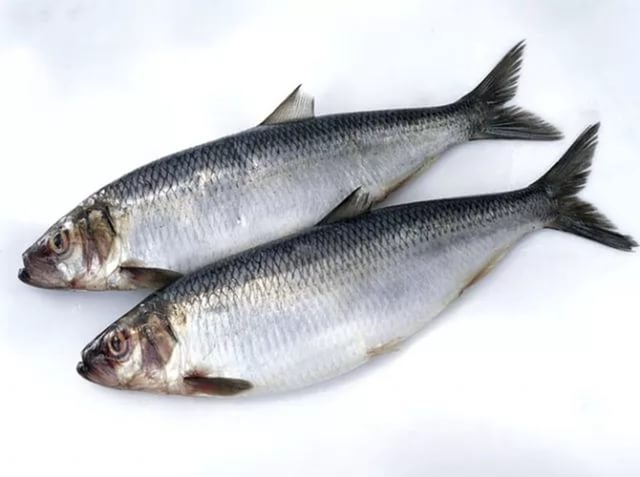
Sargan-like fish are elongated in shape with long, sometimes asymmetrical jaws.

The shark is one of the largest marine predators. The whale shark is the only one that feeds on plankton. The unique abilities of sharks are smell and hearing. They can smell a smell from several hundred kilometers away, and their inner ear is capable of detecting ultrasound. The shark's powerful weapon is its sharp teeth, with which it tears the victim's body into pieces. One of the main misconceptions is the idea that all sharks are dangerous to humans. Only 4 species pose a danger to people - bull shark, white shark, tiger shark, and whitetip shark.
Deep sea fauna
There are a great many inhabitants of the seabed, but their sizes are microscopic. These are mainly the simplest unicellular organisms, coelenterates, worms, crustaceans and mollusks. However, in deep water there are also fish and jellyfish that develop the ability to glow. Therefore, we can say that there is not absolute darkness under the water column. The fish that live there are predatory and use light to attract prey. One of the most unusual and terrifying, at first glance, is the hauliod. This is a small black fish with a long whisker on the lower lip, with the help of which it moves, and with terrible long teeth.
One of the most recognizable representatives of the mollusk order is the squid. It lives in both warm and cold seas. The colder the water, the paler the color of the squid. The change in color saturation also depends on the electrical impulse. Some individuals have three hearts, so they have the ability to regenerate. Squids are predators; they feed on small crustaceans and plankton.
Shellfish also include oysters, mussels, and scallops. These representatives have a soft body, closed in a shell of two valves. They practically do not move, bury themselves in silt or live in large colonies, located on rocks and underwater reefs.
Snakes and turtles
Sea turtles are large animals. They reach 1.5 m in length and can weigh up to 300 kg. Ridley is the smallest among all turtles, weighing no more than 50 kg. The front legs of turtles are better developed than the hind legs. This helps them swim long distances. It is known that sea turtles appear on land only to procreate. The carapace is a bony formation with thick scutes. Its color ranges from light brown to dark green.
When getting their food, turtles swim to a depth of 10 meters. They mainly feed on shellfish, algae and sometimes small jellyfish.
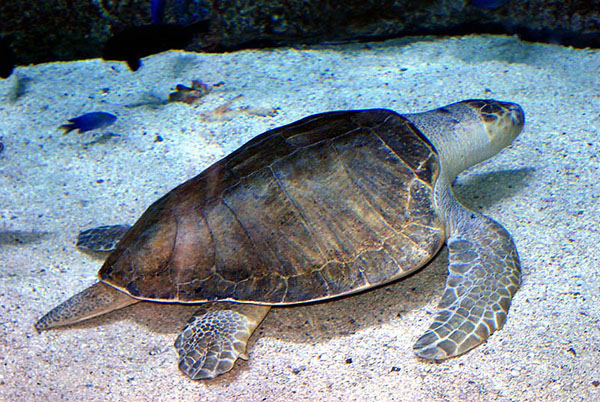
Sea snakes exist in 56 species, grouped into 16 genera. They are found off the coast of Africa and Central America, in the Red Sea and near the coast of Japan. A large population lives in the South China Sea.
Snakes do not dive deeper than 200 meters, but they can remain without air for 2 hours. Therefore, these underwater inhabitants do not swim further than 5 - 6 km from land. Crustaceans, shrimp, and eels became their food. The most famous representatives of sea snakes:
- The Ringed Emidocephalus is a snake with poisonous teeth.
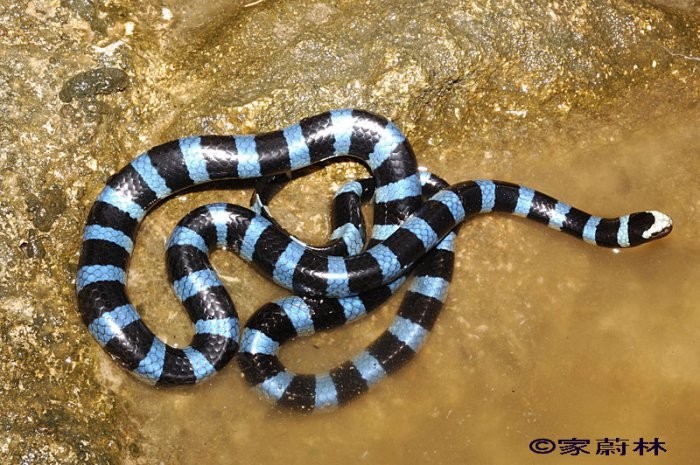
- Microcephalus is a small (70 - 80 cm) snake with a small head, a thick rear part and large triangular scales that cover the entire body.
- Dubois is a sea snake native to the coast of Australia. Thanks to its light brown color with small spots, it is well camouflaged. It strikes fear into local residents and divers, since its venom can be compared in strength to that of a cobra.
Snakes rarely live alone, usually forming large aggregations.
Marine inhabitants, their photos with names, habitats and unusual facts of life are of great interest to both scientists and amateurs. The sea is a whole Universe, the secrets of which people will have to learn for many more millennia.
Life on planet Earth originated in the ocean. It was from the water that the first animals came to land. are distinguished by enormous species diversity. All marine representatives of the organic world live in the water column and on the ocean floor. Scientists count more than 150 thousand inhabitants of the oceans and seas, including plant and animal organisms that inhabit the sea and ocean spaces of the planet.
Inhabitants of the seas and oceans: diversity and living conditions
Everyone knows that the aquatic environment is strikingly different from the land-air environment. Significant depths are excommunicated by low temperature and high pressure. Living at great depths, they practically do not see sunlight, but despite this variety of life forms, it is amazing.
Almost all useful substances that are necessary for the life of the inhabitants of the deep sea dissolve in water. The water space warms up very slowly, but heat transfer occurs over a long period of time. Of course, at significant depths the temperature changes almost imperceptibly. An important component for all creatures in the water column is the presence of oxygen. In the absence of free oxygen, hydrogen sulfide is formed, this is typical for the Black Sea and Arabian Sea.
Inhabitants of the seas and oceans For full development, protein is required, which is found in large quantities in
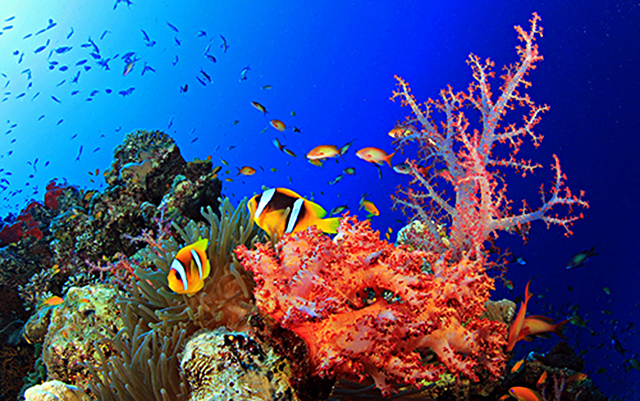
Flora of the oceans and seas
Sea plants contain chlorophyll, a green pigment. With its help, the energy of the sun is accumulated. Water is split into oxygen and hydrogen, and then the hydrogen enters into a chemical reaction with carbon dioxide from the surrounding aquatic environment. After this, starch, sugar and proteins are formed.
At relatively shallow depths there is a rich flora. The inhabitants of the deep sea find food for themselves.

One of the most common algae is kelp; their length can reach six meters. It is from this plant that iodine is obtained, and they are also used as fertilizer for fields.
Another brightest inhabitants of the seas and oceans (mainly southern latitudes) are marine organisms that are named - But they should not be confused with plants, these are real animals. They live in large colonies, attaching themselves to rocky surfaces.
Plants need sunlight, so plants are found at least 200 meters deep. Only live below inhabitants of the seas and oceans who do not need the light of the sun.
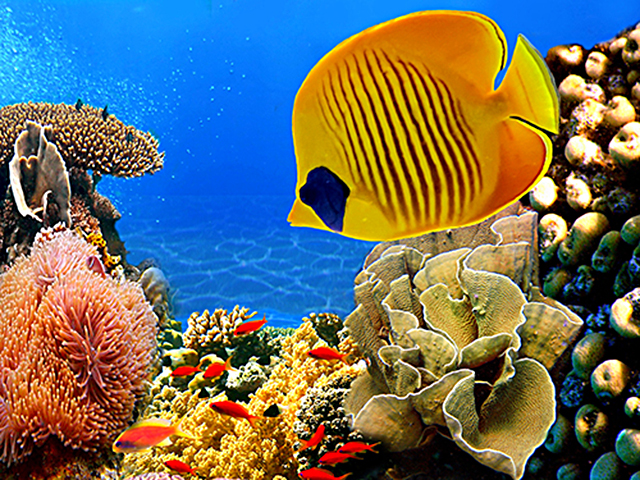
Sea creatures
Previously, it was believed that no one lives below six kilometers of depth due to the high pressure that the water column exerts on living beings. But scientists conducted deep-sea studies that confirmed the hypothesis that at great depths there are various species (crustaceans, worms, etc.). Some deep sea inhabitants of the seas and oceans periodically rise to a depth of up to a thousand meters. They do not float higher, because... Closer to the surface, large differences in water temperature are observed.
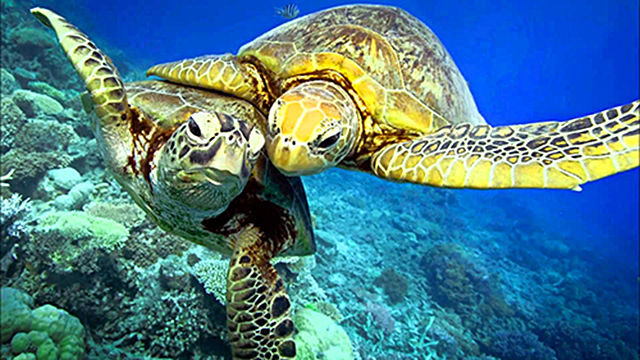
Many deep-sea inhabitants who spend their entire lives at the bottom have no vision. But some parts of their body have special flashlights. They are needed to escape predators and to attract potential prey.
Animals of the seas and oceans feel comfortable in their environment, many of them do not need to adapt to seasonal environmental changes.
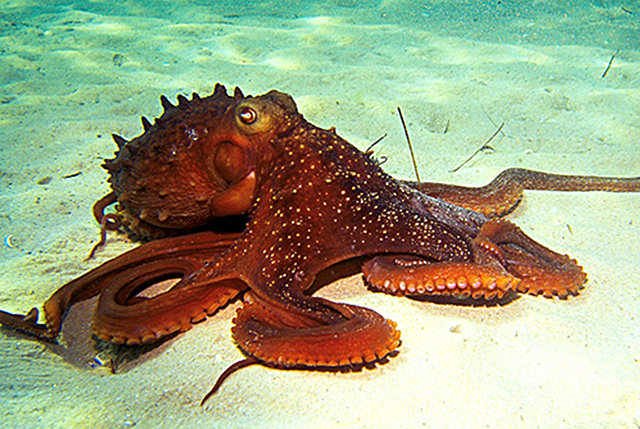
A special role in the life of many marine inhabitants is played by single-celled organisms, which are called plankton and move with the help of currents. They feed on many fish, which constantly follow them. With increasing depth, the amount of plankton decreases sharply.
Scientists have long proven that inhabitants of the seas and oceans live in all water layers. These animals and plants are distinguished by great species diversity, as well as unusual shapes and colors. You can endlessly admire the various species of fish, corals and other marine inhabitants of the most bizarre forms that seem to be aliens from another planet and admire the perfection of nature.
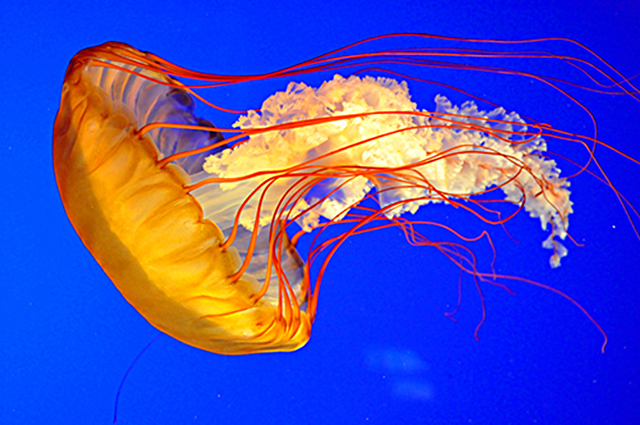
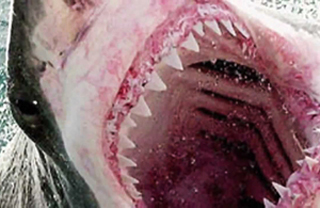
And in conclusion, I bring to your attention an extremely interesting documentary film dedicated to various entitled “The Most Dangerous Animals. Depths of the sea." Take a look, it will be interesting!
The underwater world is extremely diverse; new species of marine fish and animals are constantly being discovered. Over 30,000 species of fish and an uneven number of mollusks and crustaceans live on Earth. Let's try to illuminate a small part of them.
SHARKS- one of the most formidable inhabitants of the ocean. The absence of bone tissue and gill covers, the structural features of the scales and many other structural features indicate their ancient origin, which is confirmed by paleontological data - the age of the fossil remains of the first sharks is approximately 350 million years. Despite the primitiveness of their organization, sharks are one of the most advanced predatory fish in the ocean.
Over a long period of existence, they have managed to perfectly adapt to life in the water column and now successfully compete with bony fish and marine mammals. Unlike bony fish, sharks and rays do not spawn, but lay large, cornea-covered eggs or give birth to live young.
Whale sharks (up to 20 meters) and the so-called giant sharks (up to 15 meters) reach the greatest size. Both of them, like baleen whales, feed on planktonic organisms. With their mouths wide open, these sharks slowly swim in the thick of plankton accumulations and filter water through gill openings covered with a network of special outgrowths of the surrounding tissue. A giant shark filters up to one and a half thousand cubic meters of water in an hour and removes from it all organisms larger than 1-2 millimeters.
There is very little information about the reproduction of planktonic sharks. The eggs and embryos of the basking shark are generally unknown. The smallest specimens of this species are 1.5 meters long. A whale shark lays eggs. It is safe to say that these are the largest eggs in the world, their length reaches almost 70 centimeters, width - 40. Planktivorous sharks are slow and not at all aggressive. Whale sharks are not at all dangerous to humans.
Some species of sharks live near the bottom and feed on bottom-dwelling mollusks and crustaceans. These are small (no more than a meter in length) cat sharks. They live near the coast, often forming large schools.
Sharks of other species are found in the open ocean, and they do not form schools, but prowl alone or in small groups. It happens that such sharks approach the shores, and most of the attacks on swimming people are carried out by them. Among these predators, the most dangerous are white, blue-gray, tiger, blue, longarm and hammerhead sharks. Although statistics show that there are much fewer cases of people dying from sharks than is commonly believed, you should still be wary of any shark whose length exceeds 1 - 1.2 meters, especially when there is blood or food in the water. Sharks have a phenomenal ability to detect a wounded or helpless animal at a great distance by its convulsive movements or by blood entering the water.
Different types of sharks lead different lifestyles and differ quite greatly from each other in body structure and behavior. Together with stingrays, sharks belong to the most primitive group of fish, which is called cartilaginous, since their skeleton consists only of cartilage and is completely devoid of bone tissue. If you stroke a shark or ray from head to tail, their skin will feel only slightly rough, but when you move your hand in the opposite direction, you will feel sharp teeth like coarse sandpaper. This happens because each scale of cartilaginous fish is equipped with a small spine, pointing backwards. The outside of the pin is covered with a layer of durable enamel, and its base in the form of an expanding plate is embedded in the skin of the fish. Inside each scale are blood vessels and a nerve. At the edges of the mouth there are larger scales, and in the oral cavity of sharks the spines of the scales reach a significant size and no longer serve as coverings, but as teeth. Thus, shark teeth are nothing more than modified scales.
Sharks' teeth, like their scales, are staggered and sit in several rows. As one row of teeth wears out, new ones grow to replace them, located in the depths of the mouth. The shark does not chew food, but only holds, tears and tears at it, swallowing pieces as large as can pass through its wide throat.
Cartilaginous fish do not have gill covers, so on each side of the shark’s body, 5 to 7 gill slits are visible behind the head. By this external feature, sharks can be easily and accurately distinguished from other fish. The stingray's gill slits are located on its ventral side and are hidden from the observer's eye.
It should be noted that these animals, despite the aversion people feel towards them, are of great commercial importance. Their meat, skin and liver oil are used, which contains several tens of times more vitamin A than cod liver oil. Salted, smoked and specially prepared fresh meat of many species of sharks is distinguished by high taste qualities. One of these fish, whose fins are used to make soup (the pride of Chinese cuisine), was even called a soup shark.
WHALES- the largest animals on our planet.

The prehistoric ancestors of whales lived on land and walked on four legs. True, in those days they were not as large as they are now. The body structure of whales began to change about 50 million years ago - it was then that they moved to the ocean, and it was in the water that some of them became giants. This is how the largest animals on Earth appeared - blue whales. Their length can exceed 26 meters and their weight is 110 tons.
Whales move through the water using a tail equipped with two powerful blades. This is the tail fin. Unlike fish, which swim by moving their tail from side to side, cetaceans swing their tail forcefully up and down.

Whales have pectoral fins located in front on both sides of the body. Even before whales moved to the sea, they used their current pectoral fins to move on land. Now whales use them as steering and braking rudders, and sometimes to repel enemy attacks, but not for swimming.
Most whales have a fixed fin on their back that helps them maintain stability when moving through the water. Fins can be small or large, depending on the size of the whale.
The blowholes of whales are located on the top of the head; they open only for a short moment of inhalation and exhalation, when the whale floats to the surface of the water. Whale lungs have a large volume, and whales can stay under water for a long time without breathing, and even dive to a depth of more than 500 meters, and sperm whales - to a depth of more than one kilometer.
Whales look like huge fish, but they are not fish, but mammals, and their internal structure is almost the same as that of a person. And whales, like other mammals, feed their young with milk. Whales are warm-blooded animals, and they are protected from hypothermia by a thick layer of subcutaneous fat.
From the very moment it is born underwater, a whale calf is completely dependent on its mother and stays close to her all the time. It will take many months, and sometimes years, before the baby whale can take care of itself.
The first thing a newborn whale does, even though it cannot swim yet, is to float to the surface of the water and take a breath of air. The mother and sometimes other females help in this matter. After about half an hour, the cub will learn to swim on its own.
Baby whales learn by imitating adults. They tumble, dive and float to the surface with their mother. Kithi not only teach babies, but also play with them with pleasure. Female gray whales love a special game: they swim under their calves and blow air bubbles from their blowholes, thus causing the little whales to spin.
The cubs swim, almost clinging to their mother. They are carried by the waves that form around her body and underwater currents. And it’s really easy to swim if you hang on the mother’s dorsal fin.

For orientation, whales make sounds that the human ear cannot detect. The whale's brain is a real sonar that picks up sound signals reflected from various objects in the water and determines the distance to them.
Whales feed mainly on fish or small crustaceans. They swim with their mouths open, filtering water through special plates called whalebone. Whales consume up to 450 kilograms of food every day. That's why they grow so huge!
Some whales, called odontocetes, do not have baleen, but do have teeth. Toothed whales, sperm whales, feed on huge squids, in search of which they dive to great depths.
Despite their size, whales are unusually graceful. They are not only excellent swimmers, but also acrobats: they can jump, wave their butterfly-like tail over the water, and glide through the waves, sticking their heads out of the water like a periscope. Some scientists believe that the noise that whales make when they hit the water with their tails or splash into the water after a jump is a conditioned signal for their relatives. But perhaps the whales are just playing.
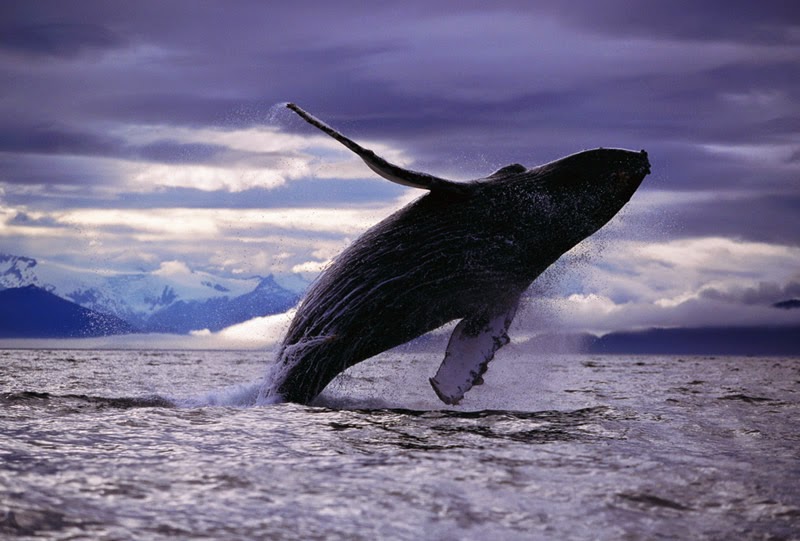
People have been hunting whales for a long time. Nowadays, there are very few of these sea giants left, and they are under protection.
RAYS are a superorder of elasmobranch cartilaginous fishes, which includes 5 orders and 15 families. Stingrays are characterized by pectoral fins fused to the head and a rather flat body. Stingrays mainly live in the seas. Several freshwater species are also known to science. The color of the upper part of their body depends on where exactly the stingrays live. It can be either black or very light.
Stingrays are found throughout the world, including the Arctic Ocean and the coast of Antarctica. But the easiest way to see them with your own eyes is off the coast of Australia, where stingrays love to scratch their bellies on the coral reef.
Stingrays are the closest relatives of sharks. Outwardly, of course, they are not similar, but they, like sharks, are made of cartilage, not bones. Stingrays, along with sharks, are one of the most ancient fish, and in earlier times their internal similarities were complemented by external ones. Until life begins to flatten the stingrays, excuse me. As a result, sharks are doomed to scurry around in the water, and rays are doomed to lie sluggishly on the bottom.
The lifestyle of stingrays has determined their unique respiratory system. All fish breathe through gills, but if a stingray tried to be like everyone else, it would suck silt and sand into its delicate insides. That's why stingrays breathe differently. They inhale oxygen through squirters, which are located on their back and are equipped with a valve that protects the body. If, nevertheless, some foreign particle gets into the splash pads along with the water - sand or plant remains, the stingrays release a stream of water through the spray pads and throw out the foreign object along with it.
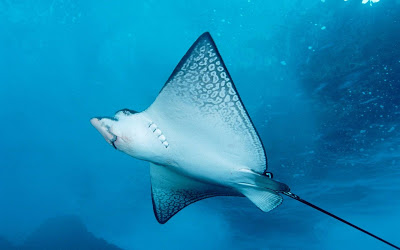
Stingrays are unique waterfowl butterflies. This analogy can be drawn based on how stingrays move in water. They are also unique in that they do not use their tail when swimming, as other fish do. Stingrays move by moving their fins, resembling butterflies.
Stingrays come in a wide variety of sizes, from a few centimeters to seven meters. And they also differ from each other in behavior. While most of them lie at the bottom, buried in the sand, some of them love to jump above the water, shocking impressionable sailors for a long time and inspiring them to write sea legends. Particularly distinguished by this is perhaps the most famous of all stingrays, the manta ray or sea devil. When suddenly a seven-meter winged creature weighing two tons flies out of the sea abyss and a moment later disappears again into the depths, dragging a black pointed tail behind it - this spectacle is truly worthy of a detailed story.

But the sea devil is not as scary as the electric stingray. The cells of his body are capable of generating electricity up to 220 volts. And there are countless divers who have been electrocuted by an electric stingray.
However, all stingrays produce electricity, but not as strong as the electric stingray. The spiny-tailed ray prefers a different type of weapon. He kills with his tail. It plunges its sharp tail into the victim, then pulls it back - and since the tail is studded with spikes, the wound ruptures.
But they enter into battle only for the sake of self-defense. They feed on mollusks and crustaceans. For this reason, they do not even need sharp, shark-like teeth. Stingrays grind their food with spike-like protrusions or plates.
SWORDBA- the order of perciformes, the only representative of the swordfish family. Length up to 4-4.5 m, weighs up to 0.5 tons. The upper jaw is elongated into the xiphoid process. It is found mainly in tropical and subtropical waters, and is found sporadically in the Black and Azov Seas. When swimming, it can reach speeds of up to 120-130 km/h. It is an object of fishing.

Among the numerous and diverse inhabitants of the seas and oceans, swordfish is one of the most interesting predators. The swordfish received its name due to its highly elongated upper jaw, called the rostrum, which has the shape of a pointed sword and makes up up to a third of the entire length of the body. Biologists consider the rostrum to be a weapon that swordfish use to stun prey by bursting into schools of mackerel and tuna. The swordfish itself does not suffer from the blow: at the base of its sword there are peculiar fatty shock absorbers - cellular cavities filled with fat and softening the force of the blow. There are known cases when swordfish pierced through thick planks of ship plating. The reason for the attack of swordfish on ships has not yet received a precise explanation. Interpretations such as, for example, mistaking the vessel for a whale due to fast swimming, and “rabies” are purely speculative.
Swordfish is rightfully considered the fastest swimmer among all the inhabitants of the deep sea. She can swim at a speed of 120 km per hour. The swordfish is capable of developing such speed due to some structural features of its body. The sword greatly reduces drag when moving in dense water. In addition, the torpedo-shaped, streamlined body of an adult swordfish is devoid of scales. In swordfish and its closest relatives, gills are not only a respiratory organ, they serve as a kind of hydrojet engine. There is a continuous flow of water through the gills, the speed of which is regulated by the narrowing or widening of the gill slits. The body temperature of such fish is 12 - 15 degrees higher than the ocean temperature. This provides them with a high “starting” readiness, allowing them to unexpectedly develop amazing speed when hunting or evading enemies.
Swordfish reaches a length of 4.5 meters and weighs up to 500 kg. She lives mainly in the open ocean and approaches the shore only during the spawning season. Swordfish are solitary wanderers. Sometimes in the ocean near a large concentration of fish you can see several dozen swordfish, but they do not form schools - each predator acts independently of its neighbors.
Swordfish meat is very tasty. However, consuming its liver is dangerous - it contains excess vitamin A.
OCTOPUS. They do not have a hard skeleton. Its soft body has no bones and can bend freely in different directions. The octopus was named so because eight limbs extend from its short body. They have two rows of large suction cups, which the octopus can use to hold prey or attach to rocks at the bottom.
Octopuses live near the bottom, hiding in crevices between rocks or in underwater caves. They have the ability to change color very quickly and become the same color as the ground.
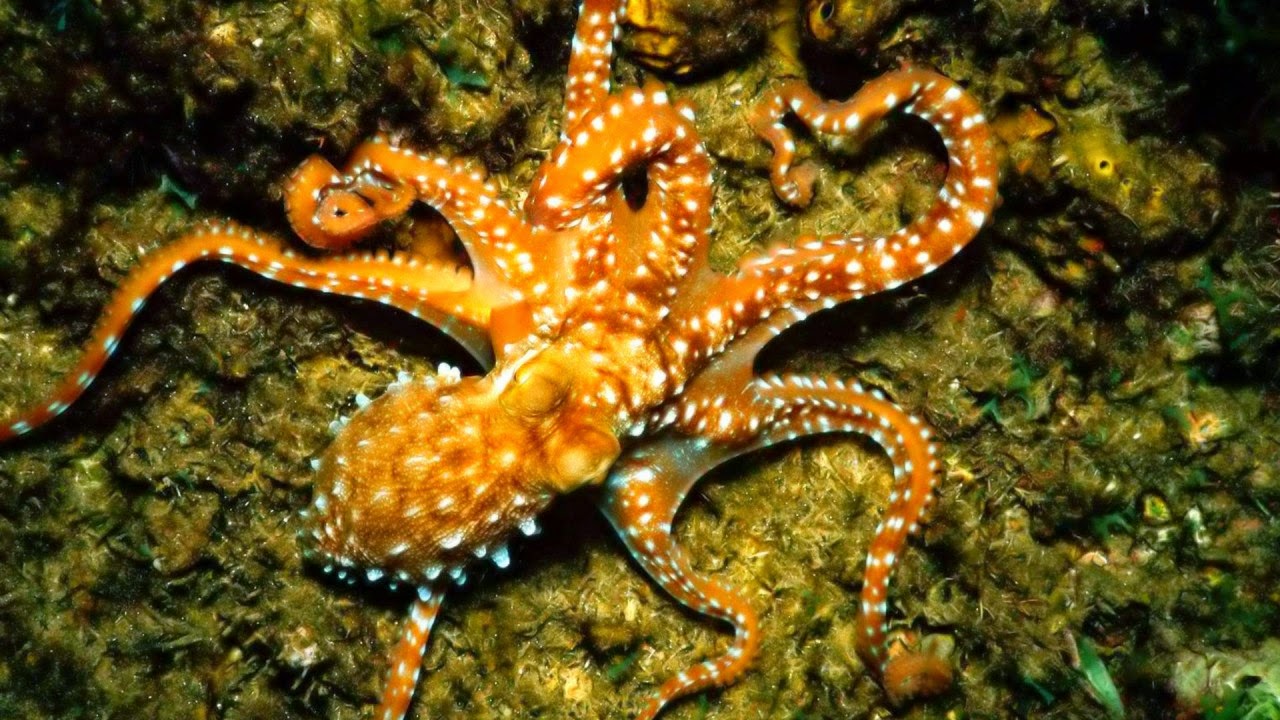
The only hard part of an octopus's body is its horny beak-like jaws. Octopuses are true predators. At night they get out of their hiding places and go hunting. Octopuses can not only swim, but also “walk” along the bottom by rearranging their tentacles. The usual prey of octopuses are shrimp, lobsters, crabs and fish, which they paralyze with poison from the salivary glands. With their beak they can break even the strong shells of crabs and crayfish or shells of mollusks. Octopuses take their prey to a shelter, where they slowly eat it. Among octopuses there are very poisonous ones, the bite of which can be fatal even to humans.
Octopuses often build shelters from stones or shells, using their tentacles as hands. Octopuses guard their home and can easily find it even if they have gone far away.
For a long time, people have been afraid of octopuses (octopuses, as they called them), writing terrible legends about them. The ancient Roman scientist Pliny the Elder talked about a giant octopus - “polypus”, which stole fishing catches. Every night the octopus climbed onto the shore and ate the fish lying in the baskets. The dogs, smelling the octopus, started barking. The fishermen who came running saw the octopus defending itself from the dogs with its huge tentacles. The fishermen had difficulty coping with the octopus. When the giant was measured, it turned out that its tentacles reached a length of 10 meters, and its weight was about 300 kilograms.
GARFISH- or “sea pike” is a fish of the garfish genus.
The turquoise-colored common garfish is one of the fish that can dance above the surface of the water. Faster and faster they move towards the light, just for fun or to “escape” from danger. This fast and graceful predator has a narrow body. Small sharp teeth on a peculiar beak allow the garfish, while swimming quickly, to grab small prey - herring, crustaceans. Garfish are found in large numbers in the Black and other seas.
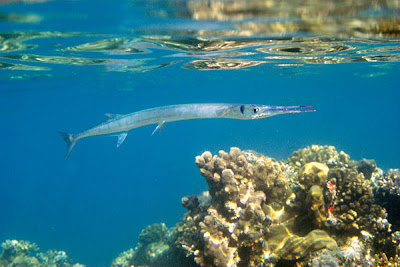
In the spring, garfish begin their reproductive period: along the coast they lay round eggs, which are attached to algae and other aquatic vegetation with the help of thin sticky threads. Garfish larvae are born without a beak; it appears only in adult individuals. In winter, garfish move to the open sea.
Garfish are predominantly marine inhabitants, distributed in tropical, subtropical and temperate oceans. Some of them reach a length of 1.5 m and a weight of 4 kg. This large family, numbering about 12 genera, is represented in the Black Sea by only one species - Belone belone euxini.
The Black Sea garfish, or, as it is also called, sea pike, has a typical arrow-shaped body covered with small silvery scales. The back is green. The length is usually up to 75 cm. This schooling pelagic fish has elongated jaws in the form of a sharp beak.
Lives 6-7 years, reaches sexual maturity in one year.
Once upon a time, garfish, being one of the most delicious fish of the Black Sea, was rightfully one of the top five commercial species caught off the coast of Crimea. The total annual catch of garfish reached 300-500 tons. Often large specimens were caught in the nets of Crimean fishermen - about 1 m long and weighing up to 1 kg.
SEA STARS- animals whose body shape resembles a star. They have warts or spines on the surface of their body. Five rays, called arms, usually extend from the body of a starfish.
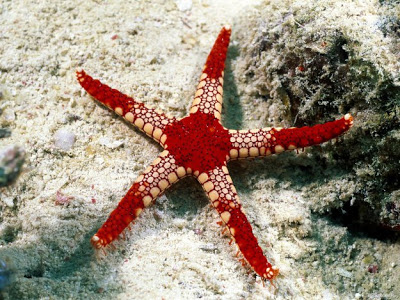
They appeared on Earth more than 400 million years ago, but about 1,500 species of these peculiar animals still live in the seas and oceans of our planet. Some are found on sand mixed with stones and on shell rocks.
Starfish come in a variety of colors. For example, the Pacific star is dark purple. There is also a black star. It is easily distinguished by its black back. There are dark gray starfish, and on the rays against a dark background there may be yellowish and whitish spots, sometimes arranged in the form of stripes.
The Japanese star lives in the waters of Japan. Its dorsal side is bright crimson, often mixed with purple shades. The tips of the needles and belly are whitish.
But the most beautiful starfish is the reticulated starfish. Her belly is orange. On the crimson back there are rows of turquoise-blue needles. They seem to form a network or bizarre bright patterns. That's why they gave these starfish the name reticulated.
Starfish are active animals. They walk along the shores of seas and oceans with the help of tiny legs. Under a microscope, several elongated “bones” can be seen on her body, working like scissors or forceps. With these tongs, the starfish cleans off various insects that bite it - after all, they so like to sit on such comfortable “hosts” as stars.
The starfish usually feeds on other animals, mainly mollusks. For example, a shell is not such a reliable protection for a mollusk. The star clasps the shell with its hands, sticks to it with its legs and, due to muscle tension, pushes the shell flaps apart and eats. But mollusks also sometimes resist and do not allow themselves to be caught. They, sensing the approach of a starfish, release the mantle between the valves and manage to “wrap” the entire shell in it: the tentacles of the starfish slide over the saucer, and they cannot grab it.
Sometimes starfish even eat sea urchins, which are as spiny as themselves. The starfish is a real predator. Her abilities are very diverse.
Starfish are capable of absorbing objects that are sometimes several times their own size. To do this, they have a curious adaptation: they crawl onto the victim from above and turn the stomach out through the mouth, surrounding potential food on all sides as if in a kind of bag. Gastric juice is secreted into this sac, where digestion occurs. After a few hours, the star collapses its stomach and crawls away.
Most starfish play the role of seabed orderlies, eating all sorts of remains of dead animals.
Once upon a time, 50 years ago, people deliberately destroyed starfish. There were too many of them and they destroyed many sea animals. Hundreds of people went out to sea on boats and cutters and, protecting their hands with gloves, collected starfish, loaded them into baskets and took them ashore.
But the number of starfish still did not decrease. They began to destroy coral reefs, turning them into a lifeless desert. Once upon a time, the bottom of the Pacific coast was covered with magnificent gardens of coral colonies, which looked like a wonderful underwater kingdom. Nowadays desolation reigns here due to the harmful influence of starfish. Those coral reefs that still exist are sometimes hidden under huge moving clusters of starfish, after the invasion of which life leaves the reef.
Scientists have come to the conclusion that a scientific research program is needed to thoroughly study the relationships between starfish and other coral reef inhabitants in order to restore balance.
SEA URCHNISHES- very prickly creatures. Their entire body is protected by long, sharp needles, attached to the body using cleverly designed hinges.
Stepping on such a hedgehog is both painful and dangerous: its needles are covered with mucus, saturated with bacteria, which cause severe suppuration. With the help of poisonous needles, sea urchins fight enemies, such as starfish. However, not all sea urchins are so dangerous and scary. Most of them are completely harmless to humans.

Some sand dollars are covered with such fine spines that their surface appears velvety rather than prickly.
Sea urchins are the most multi-legged animals in the world. The total number of legs of sea urchins is enormous. They are shaped like suction cups. With the help of its legs, the animal can not only move from place to place and crawl even along steep rocks, but also firmly attaches itself to stones and soil in places where there are a lot of waves. The hedgehog seems to stick to what it stands on so that it does not get washed away by water.
Sea urchins live on rocks, stones, and coral reefs. Some bury themselves in the ground or sand. Sometimes on the seashore, sea urchins gather in such quantities that their spines come into contact with each other. Some species occupy various recesses in the rocks, others are able to drill shelters for themselves, which serve them as protection from waves. Often, hedgehogs cover themselves with fragments of shells, pieces of algae or small stones, in order, obviously, to protect themselves from exposure to direct sunlight or to camouflage themselves from enemies. There are species that hide under stones all day and come out to feed only at night.
They eat what they can catch in the water or on land. For example, shellfish, which are crushed with powerful teeth. They hunt very interestingly. As soon as any animal touches the hedgehog, its legs immediately begin to move and try to grab the prey. As soon as one of the legs manages to catch the prey, the hedgehog squeezes it tightly and holds it until the prey dies. After this, the prey is passed from one leg to the other until it reaches the mouth. When feeding, hedgehogs hold food with their spines, push it into their mouths and bite off small pieces. With the help of sharp teeth, sea urchins can scrape algae from the surface of stones and capture other food.
But neither sharp needles nor teeth can sometimes save a hedgehog from its enemies. Such an animal as the sea otter deals with sea urchins very interestingly. She collects sea urchins in coastal waters, takes them in her front paws and swims on her back, holding the prey on her chest in front of her, then breaks the urchins' shells on rocks or other hard objects and eats the eggs. Birds hunt for sea urchins at low tide. Birds have been observed dropping collected hedgehogs from a height onto rocks, breaking them and pecking out the soft parts.
Sea urchins are also eaten by people. Sea urchin caviar is especially prized. Hedgehogs lay eggs several times a year.
The mother hedgehog lays eggs and then carries them on her back all the time. Larvae emerge from the eggs. And among the larvae - hedgehogs. Hedgehogs grow rather slowly and reach adult size within a few years. Only then do they become independent.
SEA HORSE- a strange, charming creature. It has a head like a small horse, a flexible tail like a monkey, an exoskeleton like an insect, and an abdominal pouch like a kangaroo. These features, inherent in other animals, make the seahorse unlike most fish, and it behaves unusually. And yet this little creature is a real fish. Their size is about 30 centimeters, there are seahorses and 2 centimeters each.
![]()
The seahorse has its own special style of movement: it swims proudly, like the leader of a majestic parade. Working with barely noticeable fins at an incredible speed - up to 35 strokes per second, it glides smoothly.
Seahorses usually live in the water near the shore among algae. Spiked armor protects them from danger. A seahorse has bones both inside and outside. The internal skeleton is the same as that of all fish, and the external skeleton is made of bony plates. When a seahorse dies and decomposes, the exoskeleton retains its shape. People are so fascinated by this strange fish that they use dried seahorses for jewelry and inlays.
The seahorse's head is designed in such a way that it can only move it up and down, but cannot turn it to the sides.
If other animals were designed like this, they would have vision problems. However, the seahorse, due to its special structure, never has such problems. His eyes are not connected to each other and move independently of each other, they can move and look in different directions. Therefore, although the seahorse cannot turn its head, it can easily observe what is happening around it.
The most amazing thing about seahorses is that the babies are born to the father. On his belly, the horse daddy has a pouch in which he carries caviar. From these eggs the fry hatch. After the fry appear, the skate carries them in a bag for some time. By bending his body upward, he opens the bag, and the fry come out of it for a walk, but in case of danger they hide there again. Immediately after birth, little pipits must rise to the surface of the water and take air into their swim bladders, otherwise they will die from suffocation.
Almost all fish swim using their tail, but not the seahorse. Its unusual tail, long and thin, is not topped with a fin and looks more like a hand. The seahorse tightly wraps its tail around algae or coral and can stand there, frozen, for hours. And if it happens that two seahorses lock their tails, then they have to play “tug of war.”
Weddings around seahorses are very interesting. They sing and dance. They walk hand in hand (with their tails intertwined) and gracefully spin among the algae. Seahorses cannot live alone for long. If a husband or wife dies, then after a short time the other horse dies of melancholy. That's what the legends say.
Seahorses are masters of camouflage, changing color to match their surroundings. By blending into the background, they both protect themselves from predators and camouflage themselves while hunting for food.
Seahorses are unusually voracious. They catch anything living that can fit into their mouth. Their mouth acts like a pipette: when the skate's cheeks swell sharply, the prey is abruptly drawn into the mouth.
Skates feed mainly on small crustaceans. Having noticed a crustacean, the seahorse looks at it for a second or two and then draws in the crustacean even at a distance of several centimeters. Young seahorses are able to feed for 10 hours a day and eat 3-4 thousand crustaceans during this time.
In nature, there are only a few natural enemies of seahorses - shrimp, crab, clown fish and tuna. In addition, they are often eaten by dolphins.
The most serious enemies of these creatures are people: seahorses are endangered.
The main reasons for the extinction of this species: water pollution, destruction of natural habitat, fishing for aquatic trade, accidental catching in nets while catching shrimp or other fish.
Since the Middle Ages, seahorses have been attributed healing properties; they were once even used in the preparation of magical potions.
More than 20 million pipits are captured and killed every year.
CRABS- pugnacious creatures.
Fights between crabs are always preceded by threatening demonstrations: they rise on outstretched legs and spread their claws. All this is necessary to appear larger: usually in fights the larger one wins. The threatening poses of one crab are most often repeated exactly by the other, so that immediately before the fight both fighters stand in front of each other for quite a long time in the same pose, assessing the size and mood of the enemy. A small crab, as a rule, retreats without a fight, but if the difference in size is small, it can win, but in this case the fight is longer and more violent. It is very important who starts the fight, because the one who starts first usually wins, even if he is smaller. Demonstration of strength in crabs is as common and important as, for example, in dogs.
Some crabs get seriously injured after a fight. Large crabs fight longer than small ones, and it does not matter whether they are fighting an enemy larger or smaller than themselves.
During a fight, crabs begin to breathe more often. The longer and more intense the fight, the faster the fighters breathe. The breathing rate increases equally in the winner and the loser, but after the fight the winner calms down much faster than the loser, who even after a day breathes more often than usual.
Often contractions follow one after another. For example, a crab has just had a fight with one opponent and immediately begins to fight with another.
Crabs do not live only by fights; they are also known for tender feelings. Everyone knows how monkeys express friendship: they search each other, choose insects from their fur (or pretend to choose) and eat them. So, something similar is characteristic of some crabs.
Researchers have found that crabs have two types of “stranger cleaning”: long-term and short-term cleaning. A cleaner crab approaches another crab slowly, on half-bent legs, and cleans it for about a minute. The crab that is being cleaned feeds on mud all this time, and after the procedure, already clean, goes into the hole.
With short-term cleaning, everything happens a little differently. The cleaner crab, quickly rising above the surface of the bottom, approaches the object of cleaning. Cleaning lasts no more than 15 seconds. How much will you collect in these moments? The crab that is being cleaned stands calmly and motionless. This cleaning is observed mainly in the summer.
It happens that a large crab - the owner of a hole - attacks a small one that approaches its home. Then the small crab begins the lengthy procedure of cleaning the large one - it calms down and calmly goes into the hole. So this behavior is a way to calm the aggressor. Well, and, of course, cleaning brings benefits - is it bad to become clean, since you can’t reach your own back with claws?
Crabs live in colonies on muddy shores and dig deep holes. During the day, at low tide, they wander through drained areas, collect the thin top layer of silt with their claws, roll them into balls and put them in their mouths, and spend the night (and at high tide, when the water is rough and there are a lot of waves) in burrows.
The body of crabs is small. They have sharp claws. With their help, they move and collect food for themselves, and also fight. Some of them are good swimmers. They are called "swimmers". The hind legs can act as oars. Most swimming crabs are bottom-dwelling predators. Although they are able to swim, they do not do so for long.
There are such huge crabs that reach a length of 1.5 meters and weigh about eight kilograms. One adult person will not be able to lift such a crab. These crabs are called king crabs. They are less mobile than other crabs; they lie in wait for prey, hiding at the bottom among pebbles, plants, or buried in the sand.
Under the shell, the body of the mollusk is soft. There is a head, a torso and one leg. This leg is needed to bury itself in the sand at the bottom. It helps the mollusk move and even attach to stones like a suction cup. Under the shell there is a fold of skin - the mantle. The shell, like a shell, covers the body of the mollusk, which can be easily injured.On the underside of the head there is usually a mouth with a pharynx, in which there is a muscular tongue with teeth, similar to a grater. The animal uses its tongue to scrape off the soft surface of plants. On the sides of the head there are sensitive tentacles - sensory organs. With these tentacles, the mollusk touches objects and understands what they are. There are eyes near the tentacles.
All mollusks move very slowly.
There are mollusks whose shell consists of two halves. Scientists call them bivalves. Their body consists of a torso and legs and is covered with a mantle. At the posterior end of the body, the folds of the mantle are pressed against each other, forming two siphons: lower and upper. Through the lower siphon, water enters the mantle and washes the gills. And through the upper siphon the water is thrown out.
There are mollusks called “chitons”. Their form amazes with diversity, and their beauty with perfection. Because of such beauty, they are used to make necklaces and amulets that can decorate the human body and vases.
After the death of a mollusk, shells usually end up on the bottom surface. During wind waves or storms, they are thrown onto gently sloping sandy beaches and often form large accumulations, turning the deserted coast into a motley carpet of colors.
However, the “life” of empty shells on beaches is short-lived. Under the influence of waves, high tides, wind surges and precipitation, some of them again fall to inaccessible depths, while the other part is destroyed. However, after some time, a new storm or waves of a different direction bring new shells to the shore. You can walk along the seashore or ocean and collect shells.
A collection of shells can be useful for various crafts and decorations.
The depths of the sea are full of amazing secrets and they are inhabited by no less amazing living creatures, which will be discussed today. The largest animal on the planet that lives in the ocean is the whale. Despite the fact that he himself is huge, his throat is very small, and his mouth is blocked by horny plates with fringe along the edges, which is also called whalebone. This whalebone is intended for straining food. And the whale feeds like this: taking sea water into its mouth, it filters it through the whalebone, as if through a huge sieve.
The water is filtered and poured out, and small animals - crustaceans and fish - remain inside the throat. And although they are not fish, they are large sea animals. Female whales feed their little cubs with milk and whales breathe air, like earthly animals.
And there are also toothed whales, which... They do not have whalebone, but they do have huge and sharp teeth in their mouths. The sperm whale will dive deep into the sea and grab a squid with these teeth.


Octopuses are very strange animals. They are called cephalopods because their legs grow straight from their heads. Although these legs are more like tentacle arms with powerful suction cups with which it grabs prey. The octopus has eight such tentacles. If it touches the fish with its suction cups, it will stick tightly to the tentacle. The octopus can move very quickly, since it has its own natural jet engine. The octopus will take water into its water bag and push it out with tremendous force, moving in the opposite direction.

The swordfish gets its name from its sharp, bony nose that actually resembles a sword. The swordfish quickly bursts into the very thick of the school of fish and begins to strike prey left and right with its swordtail. The blow of her sword is so strong that it can pierce a fishing boat.

All sorts of animals live in the sea-ocean. There are even sea horses. The seahorse constantly blends in with its environment so that it cannot be detected.
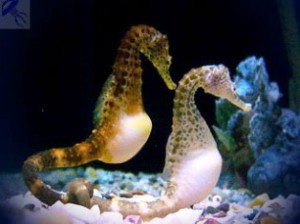
And the sea rooster, despite its name, does not know how to crow, it only cracks loudly, as if. But it is painted so brightly that it will give odds to any earthly rooster.
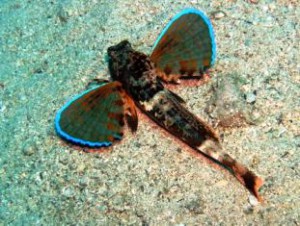
We only met a small number of amazing fish living in the depths of the ocean. In fact, the variety of living things in the ocean is as huge as the ocean itself. And ocean scientists are still discovering more and more new species of marine life.
